The post Where to Find the Best Afternoon Tea in London appeared first on The Blonde Abroad.
from The Blonde Abroad http://bit.ly/2SnwR1S
The post Where to Find the Best Afternoon Tea in London appeared first on The Blonde Abroad.

Exploring Russia’s Kamchatka Peninsula
On the remote Russian peninsula of Kamchatka, indigenous Even people watch over large herds of reindeer as their ancestors have for centuries. We caught up with them after traveling by snowmobile.
Blowing winter snow stung my face like 1000 tiny frozen needles.
Riding snowmobiles through a whiteout with 60 mph winds, at temperatures of -39F, we were attempting to escape the top of a featureless alpine plateau. The weather just keeps getting worse.
I was seriously starting to worry if we’d make it out of here…
It’s March, and we’re deep in the heart of Kamchatka, a 900-mile long Russian peninsula attached to Siberia that juts out into the Pacific Ocean.
It’s about the size of California, with only 400,000 residents.
Kamchatka is a wilderness lover’s playground, composed of thick boreal forests, geothermically active volcanoes, and barren tundra landscapes.
This mysterious landmass was off-limits to outsiders until the 1990s, due to its strategic importance to the Soviet military’s nuclear submarine bases.

Petropavlovsk-Kamchatskiy Sunset

A City Surrounded by Volcanos
No roads lead into Kamchatka, the only way to visit is by sea or air. The peninsula was once part of the Bering land bridge that connected Asia to North America.
Part of the Pacific Ocean’s notorious Ring Of Fire, Kamchatka boasts 200 different volcanoes, 30 of them active. It’s also teeming with wildlife, including a massive population of Grizzly bears.
The land has many similarities with Alaska, and was the perfect location for an adventure travel photography tour that I was co-leading with fellow travel photographer Matt Reichel.
Our mission? Take a group of adventure-lovers into the heart of this lesser-known wilderness to meet with nomadic Even reindeer herders who live there.

The Small Village of Esso
We first flew into Petropavlovsk-Kamchatskiy, Kamchatka’s small Soviet-style capital city surrounded by volcanoes. Followed by a 6-hour bus ride to the small village of Esso, our jumping off point for the rest of the trip.
In Esso we secure snowmobiles, food, and supplies. We also meet up with our local backcountry guides and drivers, preparing to explore Kamchatka’s Ichinsky District for the next week.
There’s Vlad, a Belarusian fixer/translator and geological scientist who’s been living in Kamchatka researching active volcanoes. Igor is the rugged Russian team leader and former park ranger for Bystrinsky National Park.
Ilya and his wife Dasha are our indigenous Even guides, and key to helping us track the Taboons (nomadic reindeer herding communities on the tundra).

Snowmobiling through the Mountains of Kamchatka

Navigating the Rough Landscapes
Leaving civilization, our small convoy of 5 snowmobiles pulls sleds full of gear (and ourselves) through forests of fresh snow under the shadow of massive volcanoes.
Traveling by snowmobile out here is a challenging endeavor!
Sometimes you need to lean with your driver in order to navigate sharp turns, much like a motorcycle.
Occasionally dodging tree branches and always prepared to jump-off in an emergency to avoid getting crushed by the sled.
And jump-off we did, many times! When a snowmobile tips over into deep snow, it often takes a good 10-15 minutes to dig it out too.
Then there are tricky river crossings requiring careful maneuvers, sometimes building temporary bridges by hand using tree saplings and branches covered with snow.
Just traveling out to visit these reindeer herds was an adventure itself.

Even Reindeer Taboon

Did you know some reindeer are white?
After a long day of snowmobile travel through thick forests, high alpine tundra, steep mountain passes, and semi-frozen rivers in Kamchatka’s Ichinkski district, we arrive at the first reindeer taboon.
Kiryak Adukanov and his family have constructed a simple wooden cabin out here, from which to base themselves. They are Evens, an indigenous group based in Siberia.
The Even have a long history of reindeer husbandry, making a living (and living off of) semi-domesticated herds of animals in Russia’s Far East and Siberian wilderness areas.
These days reindeer meat is sold to the Russian government and other companies around the world as a luxury product that can fetch up to $10 a pound. Antlers are sold to China and ground into “medicines”.
We spend an hour pitching camp behind a huge snow drift, including digging a “snow toilet” to protect us from the wind – which becomes important later.

Kiryak walks through his herd of Reindeer…

Making new Friends in Russia!
The next morning Kiryak takes us out into the forest to meet his huge herd of reindeer, and it’s quite a sight!
Dressed in camo, with a rifle slung on his back, he shouts and whistles while trekking over the snow on a pair of homemade wooden skis — all 1200 animals following behind him like some kind of wilderness pied-piper.
The reindeer then begin to dig through the snow, munching away at the hidden grasses they prefer to eat. We’re able to walk among them, shooting photos and just watching their behavior.

Skinning and preparing the animal for its meat.
Our hosts then proceed to shoot a reindeer, something they do every few weeks. The Even live off this meat and use the pelt as warm sleeping pads and protective clothing.
We’ve brought in supplies from the village to trade in exchange for a supply of fresh meat, which will sustain us for the rest of our voyage.
The only catch, is having to watch one get butchered…
It really makes you appreciate where your meat comes from.
Skin is peeled off with the aid of sharp hunting knives, internal organs removed, and the meat is separated by head, legs, and ribs for easy transport back to camp.
Finally, a steaming cup of raw reindeer blood is passed between the Even. They drink to honor the sacrifice this animal made. It’s offered to us as guests, and a few of us give it a try…
It’s warm and tastes of iron, with mystery chunks of flesh floating around.

Crazy winds blow through our campsite!

Snowmobiling on the Alpine Tundra
Back at camp, we fire up the stove and feast on tasty bowls of hearty reindeer stew before settling into our tents for the night.
However, sleep is interrupted around 4am when wind picks up drastically and buries our campsite with snow drifts. A layer of frost covers our sleeping bags.
The morning is chaos. Sixty miles per hour winds and sub-zero temperatures force us to break camp in the middle of a whiteout.
Not sure how long it will take us to find the next taboon, we evacuate back to Esso for a night due to the bad weather, some of us showing signs of frostbite.

Herders live in Portable Yurts
After our break in Esso, we’re back on the trail again, spending the next four days tracking down another taboon in the wilderness.
Some families live in a portable yurt, moving with the herd every few weeks.
We’re staying in basic hunting cabins. My favorite of them sits at the base of snow-covered Ichinsky Volcano. At 11,834 ft. (3,607 m) tall, it’s the highest peak of Kamchatka’s Sredinny Range.
The Even people practice a form of shamanism. One legend is about a volcano spirit plucking five whales out of the ocean, one on each finger, and cooking them inside — causing the volcano to smoke.
Kamchatka has many natural hot-springs due to all the geothermal activity too.

Our Expedition Team Under the Volcano
Riding back through the snow to Esso after a long and cold week in the Russian wilderness, I reflect on what we’d seen and experienced.
Kamchatka is an interesting place. Full of rugged beauty, wildlife, and ancient culture. But without all the crowds of some more popular travel destinations.
It was a challenging trip, but those are often the most memorable anyway!
I’m looking forward to returning in the future, maybe during the summer next time, to see even more of this incredible landscape.
50 Adventure Quotes To Get You Moving
Hiking The Darien Gap Jungle
Visiting Palestine’s West Bank
Liked To Death: Is Instagram Ruining Travel?
Have you ever heard of Kamchatka before? Would you like to visit Russia? Drop me a message in the comments below!
This is a post from The Expert Vagabond adventure blog.
The post Qatar Airways Business Class (A350-900) Review appeared first on The Blonde Abroad.
The post Finding the Perfect Fragrance at Sephora appeared first on The Blonde Abroad.

Adventure Quotes for Outdoor Inspiration
The new year is upon us! These are my favorite adventure quotes to inspire you to explore the unknown. Boost your adrenaline with these motivational musings from famous risk-takers.
We’ve all been there.
Hunched over the couch, covered in cookie crumbs, battling friends in Fortnite, and daydreaming about the endless REAL adventures around the world just waiting to be experienced…
Adventures like:
Sometimes we just need a little extra inspiration to get us moving in that direction, and that’s where these quotes about adventure can help.
After exploring the world for the past 8 years, I constantly receive messages from people who dream about injecting more adventure into their lives, but are unsure where to begin.
The truth is, it’s not about WHERE you begin, it’s simply taking that first step to kick-off a chain reaction. Even if that step is scary.
One small step turns into one giant leap… and all that jazz (thanks Neil!).
So here are my favorite adventure quotes to help you jump off that dirty, depressing couch this year and plan an incredible journey for 2019!

If it scares you, give it a try!
1: “If it scares you, it might be a good thing to try.” – Seth Godin
2: “Because in the end, you won’t remember the times you spent in the office or mowing your lawn. Climb that goddamn mountain.” – Jack Kerouac
3: “May your adventures bring you closer together, even as they take you far away from home” – Trenton Lee Stewart
4: “And then there is the most dangerous risk of all – the risk of spending your life not doing what you want, on the bet you can buy yourself the freedom to do it later.” – Randy Komisar

Beautiful paths are often discovered while lost…
5: “Some beautiful paths can’t be discovered without getting lost.” – Erol Ozan
6: “A man practices the art of adventure when he breaks the chain of routine and renews his life through reading new books, traveling to new places, making new friends, taking up new hobbies and adopting new viewpoints.” – Wilfred Peterson
7: “When a man is a traveler, the world is his home and the sky is his roof, where he hangs his hat is his home and all the people are his family.” – Drew Bundini Brown
8: “I travel because I’d rather look back at my life, saying ‘I can’t believe I did that’ instead of ‘if only I had’.” – Florine Bos
9: “You must go on adventures to find out where you truly belong” – Sue Fitzmaurice

The purpose of life is to live it!
10: “The purpose of life, after all, is to live it, to taste experience to the utmost, to reach out eagerly and without fear for a newer and richer experience.” – Eleanor Roosevelt
11: “Wilderness is not a luxury but necessity of the human spirit.” – Edward Abbey
12: “I travel because I become uncomfortable being too comfortable.” – Carew Papritz
13: “Earth and sky, woods and fields, lakes and rivers, the mountain and the sea, are excellent schoolmasters, and teach of us more than we can ever learn from books.” – John Lubbock
14: “Life should not be a journey to the grave with the intention of arriving safely in a pretty and well-preserved body, but rather to skid in broadside in a cloud of smoke, thoroughly used up, totally worn out, and loudly proclaiming “Wow! What a Ride!” ― Hunter S. Thompson

Your adventures should be a top priority…
15: “If happiness is the goal – and it should be, then adventures should be top priority.” – Richard Branson
16: “To awaken quite alone in a strange town is one of the pleasantest sensations in the world. You are surrounded by adventure.” – Freya Stark
17: “Then I realized that to be more alive, I had to be less afraid. So I did it. I lost my fear and gained my whole life.” – Anonymous
18: “One travels to run away from routine, that dreadful routine that kills all imagination and all our capacity for enthusiasm.” – Ella Maillart
19: “If you don’t get out of the box you’ve been raised in, you won’t understand how much bigger the world is.” – Angelina Jolie

The danger of adventure is worth it.
20: “The danger of adventure is worth a thousand days of ease and comfort.” – Paulo Coelho
21: “I went to the woods because I wished to live deliberately, to front only the essential facts of life, and see if I could not learn what it had to teach, and not, when I came to die, discover that I had not lived.” – Henry David Thoreau
22: “If you want to know the truth of who you are, walk until not a person knows your name. Travel is the great leveler, the great teacher, bitter as medicine, crueler than mirror-glass. A long stretch of road will teach you more about yourself than a hundred years of quiet.” – Patrick Rothfuss
23: “The things you are passionate about are not random, they are your calling.” – Anonymous
24: “When a resolute young fellow steps up to the great bully, the world, and takes him boldly by the beard, he is often surprised to find it comes off in his hand, and that it was only tied on to scare away the timid adventurers.” – Ralph Waldo Emerson

I want to see the world before I die.
25: “The world is big and I want to have a good look at it before it gets dark.” – John Muir
26: “I urge you; go find buildings and mountains and oceans to swallow you whole. They will save you, in a way nothing else can.” – Christopher Poindexter
27: “I do not want to get to the end of my life and find that I just lived the length of it. I want to have lived the width of it as well.” – Diane Ackerman
28: “Only those who risk going too far can possibly find out how far they can go.” – T.S Eliot
29: “I love the places that make you realize how small you and your problems are.” – Anonymous

Adventure is an attitude for every day life.
30: “Adventure isn’t hanging off a rope on the side of a mountain. Adventure is an attitude we must apply to the day to day obstacles of life” – John Amat
31: “Attitude is the difference between an ordeal and an adventure.” — Bob Bitchin
32: “We live in a wonderful world that is full of beauty, charm and adventure. There is no end to the adventures we can have if only we seek them with our eyes open.” – Jawaharial Nehru
33: “It’s time to remember what it’s like to feel alive.” – Anonymous
34: “Life shrinks or expands in proportion to one’s courage.” – Anais Nin

The best view comes after the hardest climb.
35: “The best view comes after the hardest climb.” – Anonymous
36: “I hope you see things that startle you. I hope you feel things you never felt before. I hope you meet people with a different point of view. I hope you live a life you’re proud of. If you find that you’re not, I hope you have the strength to start all over again.” – Eric Roth
37: “Until you step into the unknown, you don’t know what you’re made of.” ― Roy T. Bennett
38: “It’s a dangerous business, Frodo, going out your door. You step onto the road, and if you don’t keep your feet, there’s no knowing where you might be swept off to.” – J.R.R. Tolkien
39: “Then one day, when you least expect it, the great adventure finds you.” – Ewan Mcgregor

The biggest adventure you can take is living your dreams!
40: “The biggest adventure you can take is to live the life of your dreams.” – Oprah Winfrey
41: “You know you are truly alive when you’re living among lions.” – Karen Blixen
42: “In every walk with nature one receives far more than he seeks.” – John Muir
43: “If we were meant to stay in one place, we’d have roots instead of feet.” – Rachel Wolchin
44: “Don’t die without embracing the daring adventure your life was meant to be.” – Steve Pavlina

It’s not the mountain we conquer, but ourselves.
45: “It’s not the mountain we conquer, but ourselves.” – Sir Edmund Hillary
46: “Stop worrying about the potholes in the road and enjoy the journey.” – Babs Hoffman
47: “I may not have gone where I intended to go, but I think I have ended up where I intended to be.” – Douglas Adams
48: “I feel the need to endanger myself every so often.” ― Tim Daly
49: “Travel is not really about leaving our homes, but leaving our habits.” – Pico Iyer

Jobs fill your pockets, adventures fill your soul.
#50: “Jobs fill your pockets, but adventures fill your soul.” – Jaime Lyn
Getting Paid To Travel The World
Travel Quotes To Inspire Wanderlust
Road Tripping Iceland’s Ring Road
My Photos From Hiking Afghanistan
Have any cool adventure quotes I missed? Which is your favorite? Drop me a message in the comments below!
This is a post from The Expert Vagabond adventure blog.
The post Tips for Visiting Universal Studios Hollywood During the Holidays appeared first on The Blonde Abroad.
The post How to Take Awesome Sparkler Photos appeared first on The Blonde Abroad.
The post Where to Find the Best Food in Cape Town appeared first on The Blonde Abroad.
The post Adventure Travel Gift Guide with Backcountry appeared first on The Blonde Abroad.
The post Qatar Airways QSuites Business Class (A350-900) Flight Review appeared first on The Blonde Abroad.
The post The Blonde Abroad’s Ultimate Holiday Giveaway appeared first on The Blonde Abroad.

Alexandra is an Online Translator
Did you know that if you’re fluent in another language, you can find online translation jobs and make money from your computer while also traveling the world?
Today, my friend Alexandra shares her experience working as a nomadic translator, along with tips for how to find work while traveling. Here’s Alexandra:
Online translation is one of the best careers for language lovers who wish to see the world without compromising their professional goals.
Unlike teaching English as a foreign language, translating may give you more flexibility and financial freedom, akin to other popular digital nomad careers such as freelance writing or graphic design.
You may choose who to work with, where to work from, when to work, and even how much you earn.
However, if you want to make a living with online translation, it’s not as easy as just being bilingual. In fact, many unsuspecting prospects don’t realize it can take years to build up the knowledge and references to become successful (a.k.a. well-paid) in this field.
But don’t fret! I’m going to share how to get started with online translation, and some of the best lessons I’ve learned for success after a decade in this business.
Some days it’s just the reverse: explore a new city in the morning while the weather is still cool, then start working by midday. Other days you just work half the day and take the other half off.
No pending projects and enough funds in the bank? What the heck, take it all off!
What if you land a gig with a full-time client? Then it’s typically an 8-9 hour day, just focusing on translating, proofreading, and publishing content for said client, clocking out around sunset.
Every other Friday I usually take the day off to either work on passion projects or just relax.

Translation or Interpretation?
Many people confuse online translation with interpretation. Translators convey the meaning from one language to another in writing, while interpreters convey the meaning orally.
Each career track requires different skills sets, too.
After working in both tracks, I can confidently tell you that translation is the most digital-nomad-friendly of the two.
Many interpretation opportunities require your physical presence and/or more sophisticated equipment for over-the-phone interpretation or video conferencing.
This makes online translation the preferred career track for those who wish to have the freedom to travel the world and work from anywhere.
Translators work in language pairs, so you must pick the two languages you are most proficient in to get started.
You are expected to specify your language pair(s) on your resume or professional profile, accordingly.
Most importantly, the language pair you choose to work with will also play an important role in determining your earning potential for any translator job.
In the rare occasion that you’re allowed to translate into a target language that isn’t your native one, a bachelor’s degree and/or significant professional experience in-country is typically required.
A 2008 report from a survey conducted by the American Translators Association (ATA) explained:
“At an average of $0.19 per word, the language combinations commanding the highest rate per word were English into Arabic and English into Danish. At an average of $0.12 per word, the language combinations commanding the lowest rate were English into Italian and English into Portuguese. The highest average hourly rates by language combination were English into Chinese ($74.92) and Chinese into English ($65.79).”
The following article by TranslationRules.com may also help you better understand competition, demand, and earnings for translators as they relate to selection of language pairs.
My primary language pair is English into Spanish, as I’m a native Spanish speaker (that being my target language here); while my secondary language pair is Spanish into English, as English is my second language and I can read and write it at a professional level.
Even though this is the language pair with the highest demand and competition for translation jobs, I still managed to earn six-figures working in the United States.

Working while Traveling
Being bilingual is not enough to become a competent freelance translator. In fact, you also must be an excellent writer in both languages and highly skilled in your industry (niche) of choice.
Moreover, there are many cultural nuances in language that you won’t learn unless you experience it in a country that speaks it.
Truth be told, I was not ready to be a professional translator until I finished four years of intense writing courses in an American college and lived in the United States.
Ways to properly prepare for an online translation career and improve your language skills include taking advantage of study abroad programs, enrolling for classes in a foreign university or hire a private language tutor from your country of interest.
Picking a niche or specialty in the language industry is as important as deciding whether you want to be a translator or an interpreter, as this will dictate the other set of skills and abilities you will need to develop before your career (and pay) takes off.
Individual translation project length is typically linked to its niche, so take that into consideration when comparing the industries you’re interested in.
Your obvious passions may not necessarily be the industries you want to be translating in, so I suggest you practice translating your top topics at home in order to zero in on your ideal translation niche.
Interested in translating websites about general topics such as tourism, lifestyle or celebrity news?
Becoming an expert on website localization and frequently reading about those topics in both languages of your pair should be part of your career development in order to have a competitive edge.
A bachelor’s degree in creative writing and/or translation in either language may be a good idea in order to land internships during your studies and/or a good entry-level translation position.
Interested in better-paying technical translation fields such as information technology, engineering, medical or legal?
I highly recommend a bachelor’s degree in your technical field of choice, with a related entry-level translation job post-graduation for a minimum of two years.
A master’s degree in translation and/or the selected technical field is also recommended in lieu of an entry-level translation job.
Either track — getting a higher-education degree in translation or two years of translation experience — will typically give you the minimum skills and preparation necessary to sit for and successfully pass a translation certification examination such as the ATA’s, if that’s what you’re interested in.

Freelance Language Translation
Getting certified as a freelance translator is as much a personal as it is a professional choice. No translation degree or certification is technically required — but it can help.
One of the nice reality checks, when I started translating, is that no translation degree or certification is required for many translator jobs unless you’re interested in a specialized field such as medical or legal.
The flip side is that, if you are certified, you are more likely to land a better translation job — or any translation project for that matter.
More likely than not, whether you get certified will depend on the niche or industry you select to work in.
Interestingly, top certification bodies such as the ATA only recommend certification to experienced, mid-career translators anyway, so I suggest you experiment translating in different industries to get a feel of what you’re really passionate about.
An ATA certification, along with other local and foreign equivalents, typically gives you an edge when applying for full-time technical translator positions or technical freelance projects online.
While this also applies to prospective non-technical online translators, references/a portfolio are more valued in the latter than the former (from my personal experience).
Still, I advise you to look up the eligibility criteria for freelance translator positions in your industries of choice for more insight related to your top niches and/or their certification requirements.
Well, at least at first.
I officially started my translating career by working for a startup while I was still in college. This first translation job is actually what helped me zero in on the niche I was interested in.
Since I didn’t have a translation degree, didn’t have a translation certification, and graduated amid the Great Recession, I was grateful and simply saw the low starting salary as a paid internship (even though it wasn’t).
All they asked me to do to prove I could do the job? Translate a sample during the interview – that was it!
So my starting salary was way less than the average college graduate is “supposed” to get. But you know what? I gained so much experience on this job, got promoted to project manager within 18 months, and that bona fide translation reference helped me get my foot in the door of the world of freelance translation.
This position also led me to other projects that I was passionate about (tourism/marketing), as it built up my confidence and resume to successfully network with destination marketing professionals on travel blogging conferences.
Still working on your writing skills or simply trying to get some translation experience?
Small jobs or projects such as translating restaurant menus in a foreign country can not only help you improve with real-world practice but can surprisingly serve as excellent networking opportunities.
Word-of-mouth goes a long way, particularly abroad! You can also pursue these kinds of opportunities in international neighborhoods within your city, whose businesses may have a need for quality translations within your language pair.
Make your professional profile stand out. Even if you have little to no translation experience, setting up an online professional profile is one of the most important steps of your career.
If you have not built a translation portfolio yet, I recommend you post samples of translations you have done in your spare time of topics or industries you are interested in working in.
This will allow prospective employers and recruiters to see the quality of your translations early on.
I landed several interviews by doing this!
REMEMBER: Both volunteer and paid translation projects and positions count, so fill out your online profile as thoroughly as possible, updating it whenever you start or finish a relevant project or position.
Don’t forget to include any awards, company goals attained, etc.

The ProZ Job Board
While ProZ and Translators Cafe are some of the best websites for translators looking for paid projects or positions, it may be hard to compete with the more experienced translators who typically bid on those job boards.
Thus, if you are a beginner, I recommend you look into People Per Hour, Upwork or Fiverr for shorter, typically-lower-competition translation projects to build up your portfolio.
Most importantly, be creative! A unique way I landed some of my first freelance translation jobs involved reaching out to the marketing/public affairs contacts of multilingual online travel websites or magazines to see if they needed freelance translators for individual projects or ask if were hiring entry-level translators.
Additionally, I went to travel blogging and tourism conferences, networking with destination marketing professionals to land this type of translation projects.
Making your online professional translator profile stand out is just as important as crafting a successful pitch. The best pitches are those that are brief, concise, and personalized to each translation project you are bidding for.
That being said, there are certain elements that should be included in all of your pitches: your current per-word rates in the currency of the offer, a brief byline highlighting your years of experience and how that experience or areas of specialization match with the translation project being offered.
Below is a sample pitch I successfully used early in my translation career. I included/excluded information depending on the client or project at hand:
My current rates are USD $0.10 per word or USD $25/hr for proofreading, meaning I can complete your web project for a total of $___ – well within your budget. I am able to deliver the completed project before your desired deadline.
About me: I studied and lived in Latin America for 18 years; have been a volunteer translator for 8 years, and have more than 3 years of full-time experience as a professional marketing, localization, and translation manager. Additionally, I’m a freelance translator and bilingual travel writer (Spanish and English).
References and endorsements can be found in my LinkedIn profile, which I have included below:
[URL here]You may reach me at ___@gmail.com
Looking forward to collaborating with you on this project!
There’s no real way of telling what your average project length will be, as it highly depends on your niche and which projects you apply for.
However, I can tell you from personal experience that website articles/blog posts average between 500-1200 words; press releases hover around 1000 words; and full website localizations can be in the hundreds of thousands of words, as you also have to translate backend items such as text on menus, photo captions, alt text, and other SEO metadata.
Interested in becoming a technical translator? Unless you are translating blog posts or website articles for a tech site, you will likely be translating guides or manuals containing hundreds of thousands of words.
If you are easily bored, this is not a field for you, as you could be working on the same guide/manual translation for weeks or even months.
When looking for online translation jobs or projects you will find that the most common way translators charge for work is per word, not per project.
Per-word rates vary widely depending on industry, technicality of a particular project, and popularity/demand-supply of the language pair.
For example, even experienced English-Spanish translators rarely earn over US $0.20 per word unless they work in very technical fields or hold a full-time position that includes website localization and bilingual marketing.
By contrast, English-Arabic translators can easily expect to earn up to US $0.40 per word for freelance projects or $200,000 for salaried positions when working with an American or European client, even in fields not considered as technical.
A simple Google search (i.e. “per word rate French into English translators”) will help you calculate an average that is best for you, your language pair, and location of your desired clientele.
From personal experience, I have found that a good starting point for beginner online translation jobs in my language pair (English into Spanish and vice versa) is US $0.10 per word.
Most translator or freelance marketplaces make clients pay you via PayPal, so expect to lose about 4% of the total of each translation project — in addition to any other fees each particular marketplace may or may not charge.
Some freelance marketplaces offer the option to get paid by ACH or check from the client, but be careful: these payment methods usually don’t include a protection by the marketplace, which exposes you to fraud and scams.
Best way to get around this? Bid for translation projects with established companies, which you can identify by visiting the profile of each translation offer.
This way, you can reach out to the translation company separately through their official website, in the hopes that they will broker future deals directly through you and without the middleman marketplace.
You can then request they send you money via other methods with lower to no fees. I did this to establish certain business relationships, plus avoided all fees by getting paid by check (which was sent within the U.S.), then have it mobile-deposited into an account by a trusted family member.
If you plan to become a freelance translator to travel the world however, it is unlikely you will be able to avoid all fees if you wish to get paid safely (and electronically).
Those who are not as comfortable working on an independent contractor basis (a.k.a. freelancing) and beginners should also look into telecommuting translator positions.
Benefits include a predetermined salary, payment via ACH or direct deposit (bye-bye fees), a set amount of hours worked per week, paid leave, and even health insurance coverage and 401(k) for some U.S.-based positions.
I highly recommend this type of telecommuting opportunities to translators with little to no experience, as they can be a great career launching pad.
Some companies offer apprenticeships, certifications, and/or other valuable perks in addition to the aforementioned benefits.
This is a great way to build up your resume before going solo, as you are unlikely to be awarded high-paying freelance translation projects without solid references.
Remember: you must build a strong foundation as competition can be fierce, especially for the most common language pairs such as Spanish into English, French into English, Italian into English, and vice versa.
Whichever track you choose, I can assure you that individual preparation and networking will be the main key to success as a translator.
I have two bachelor’s degrees in criminology and political science; have 8 years of professional translation experience, but only got certified in interpretation by a former company I work for; I never got certified in translation.
Yet, I still earn six figures as a chief Spanish translator in the public affairs/marketing/law enforcement/tourism industries in the U.S. I currently work full-time for one client—occasionally doing other side gigs/passion projects.
I got where I got by experimenting with translation gigs in different industries early in my career, in addition to individually honing my writing skills in both languages and networking online, or with industry conferences to obtain gigs/projects that eventually became part of my translation portfolio.
As you can see, your ability to hustle independently will be the major predictor of how successful you’ll be as a freelance nomadic translator! ★
Alexandra Laborde de Bess is the author of LatinAbroad.com, where she shares her struggles living with chronic pain, travel tales, and advice after exploring over 30 countries across 5 continents. Follow her on Instagram, YouTube, and Pinterest!
r/TranslationStudies – A Reddit community featuring articles, tips, and resources for people who work as translators.
ProZ.com – The most popular job board for finding online translation work.
Translators Cafe – The second most popular job board for translation projects.
How To Succeed As A Freelance Translator – Great book to help you get started as a professional translator.

My Travel Packing Gear Guide
How To Work On A Sailing Yacht
Do You Know These Travel Scams?
How I Make Money While Traveling
Have any questions for Alexandra about working as a freelance translator or landing your first job? Drop her a message in the comments below!
This is a post from The Expert Vagabond adventure blog.
The post Using the Capital One Venture Travel Reward Credit Card appeared first on The Blonde Abroad.
The post How to Spend 48 Hours in Essaouira appeared first on The Blonde Abroad.
The post Tips for Visiting Gordes Village and Market appeared first on The Blonde Abroad.
The post How to Spend 48 Hours in Marseille appeared first on The Blonde Abroad.
The post Eco-Friendly Gift Ideas for Travelers appeared first on The Blonde Abroad.
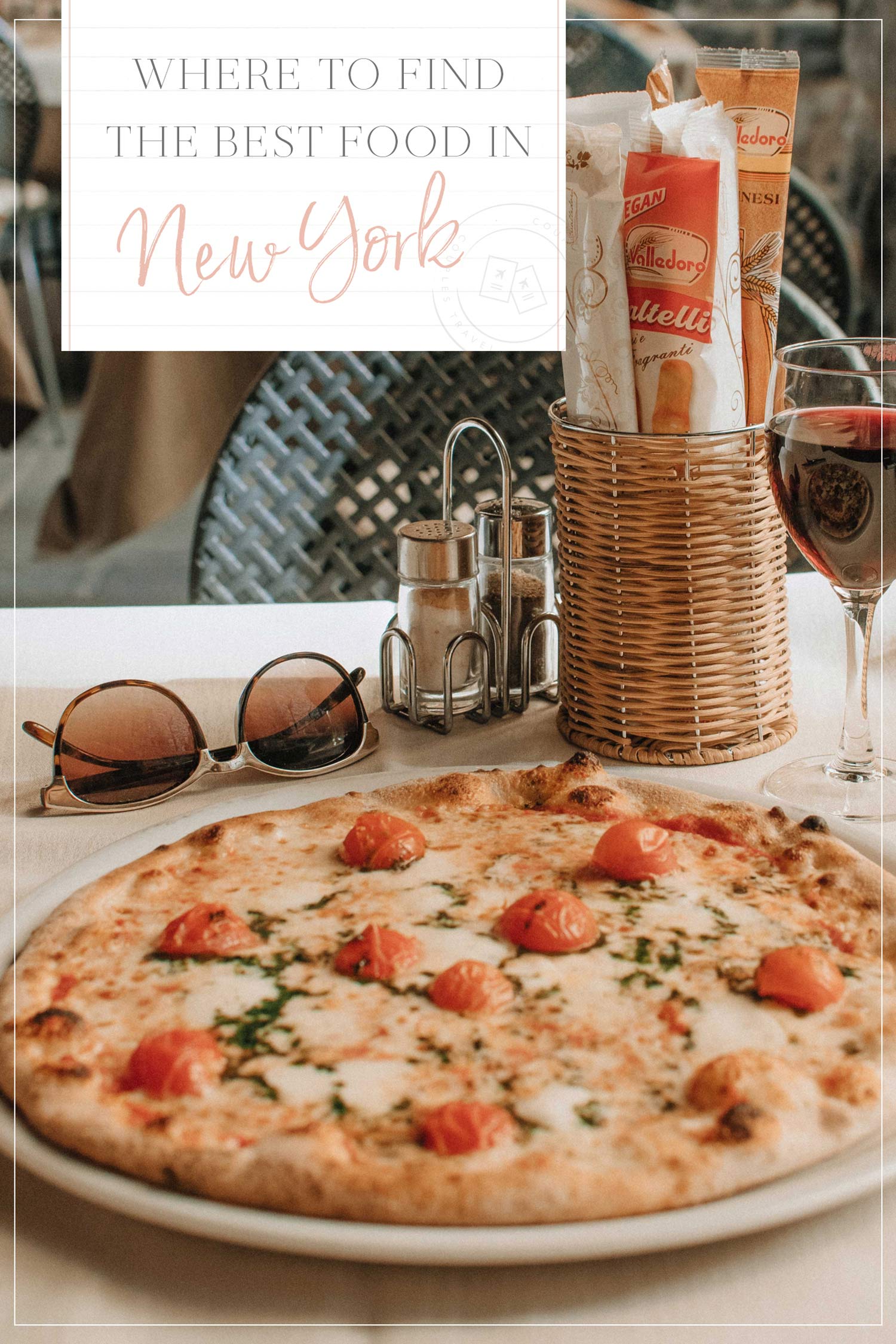
New York is one of the top foodie destinations in the United States. Some would even say that this bustling island is home to some of the best food in the world.
But within that, which spots are crafting unforgettable dishes that deserve a place on your gastronomy bucket list?
I am not an advocate of sticking to fancy and higher-end spots only – or the “most liked” on TripAdvisor. I want a combination of atmosphere, delicious cuisine, and fair price points.
Some of the restaurants on this list have earned their Michelin stars, while others have sand covering the floor. Some have only been open for a year, but already have a cult following.
![]()
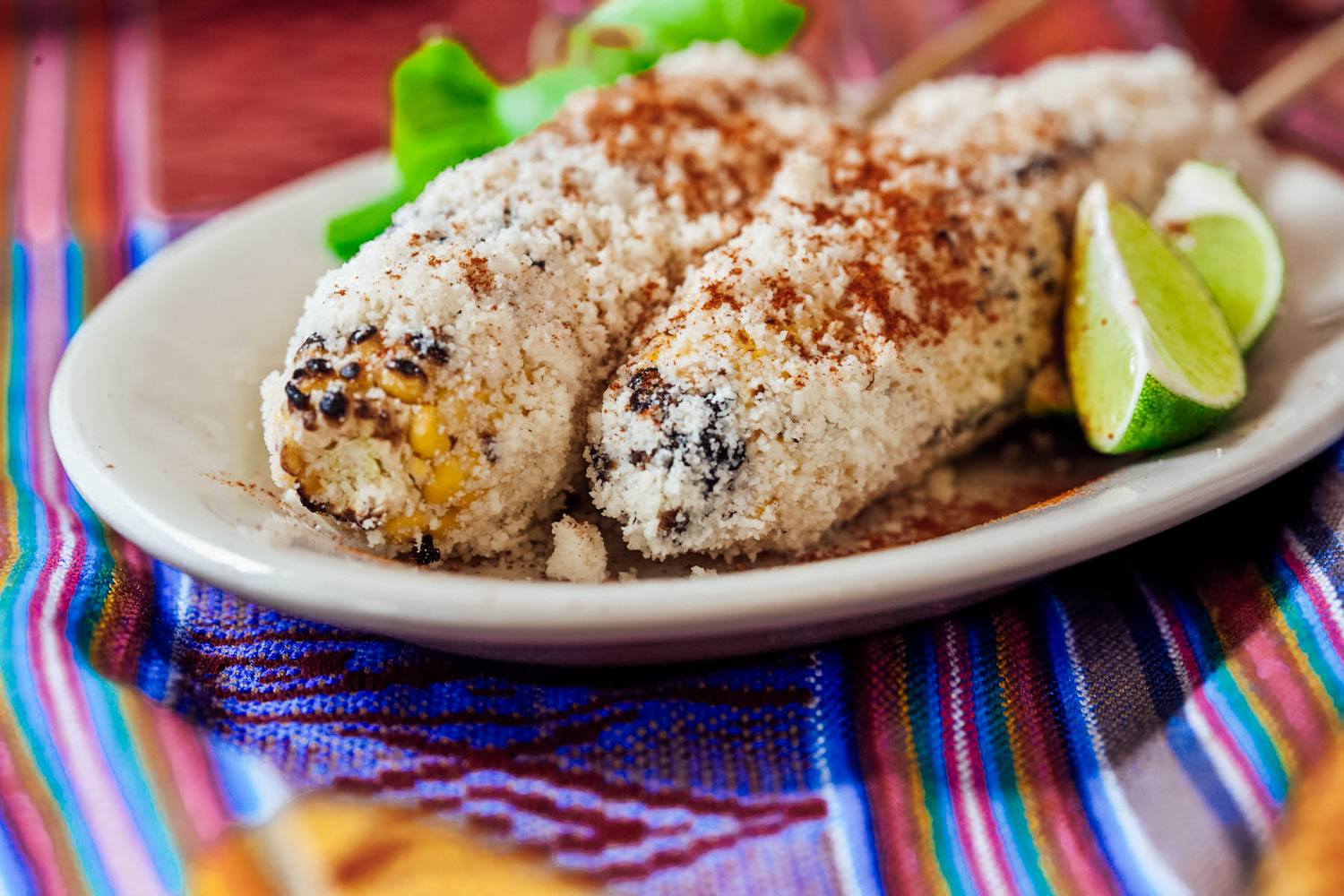
Somewhat of a New York staple, Cafe Habana is a casual yet vibrant Cuban restaurant on a busy corner of Nolita. Always crowded, Habana serves things like cotija and chili covered corn, fish tacos, and pork sandwiches.
Grab a Michelada or a margarita and hit up Cafe Habana for brunch or dinner, both are great options.
![]()
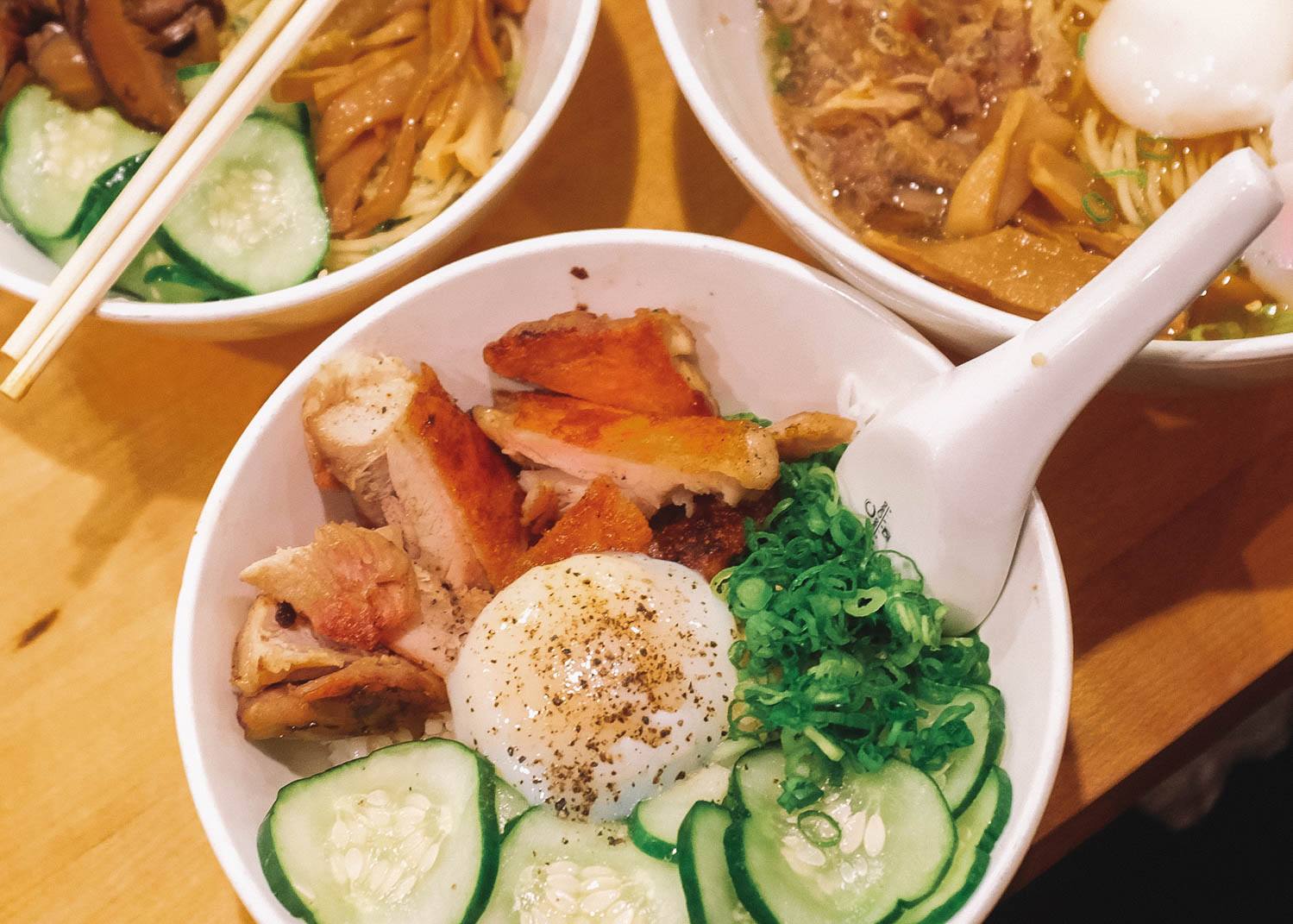
Momofuku Noodle was the first Momofuku to open back in 2004, and 14 years later it’s still going strong. The menu is not only noodle focused, and there are a host of other dishes that have strong supporting roles.
The famous pork, shrimp and shiitake buns are different and delicious, and the spicy cucumbers are incredibly memorable. Cold or not outside, this is a restaurant I want to be a repeat visitor at in all seasons of the year.
![]()
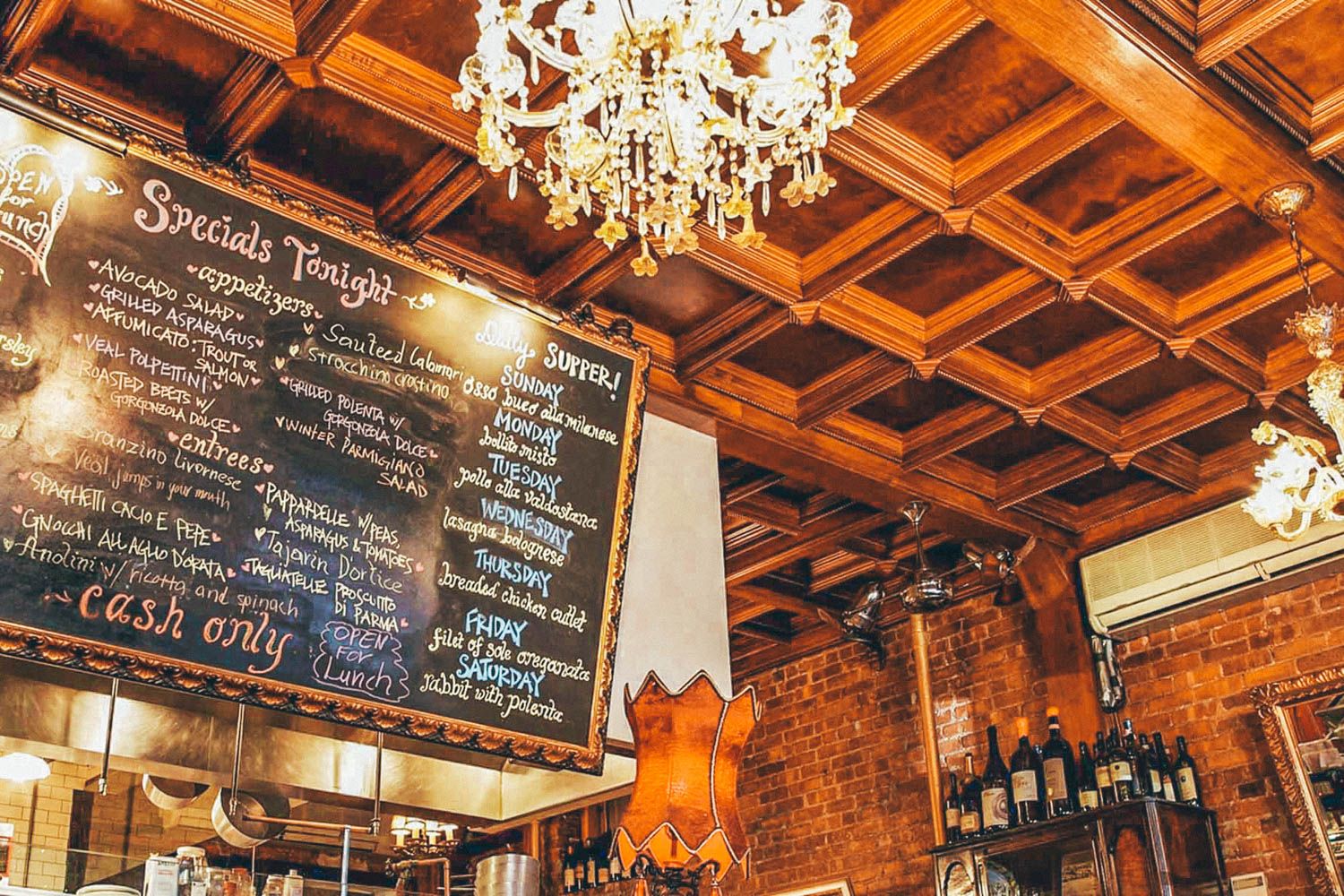
Supper is a place that I go back to over and over again, which says a whole lot when you live in a city with new restaurants popping up all the time. Dimly lit, divided into a bunch of small rooms spread throughout the restaurant, Supper is an always consistent and delicious experience.
The burrata on top of tomatoes and basil dish is massive, and an absolute must order. The spaghetti Pomodoro e Basilico with a heap of stracciatella and the spaghetti Limone are total standouts too.
You can’t really go wrong at Supper.
![]()
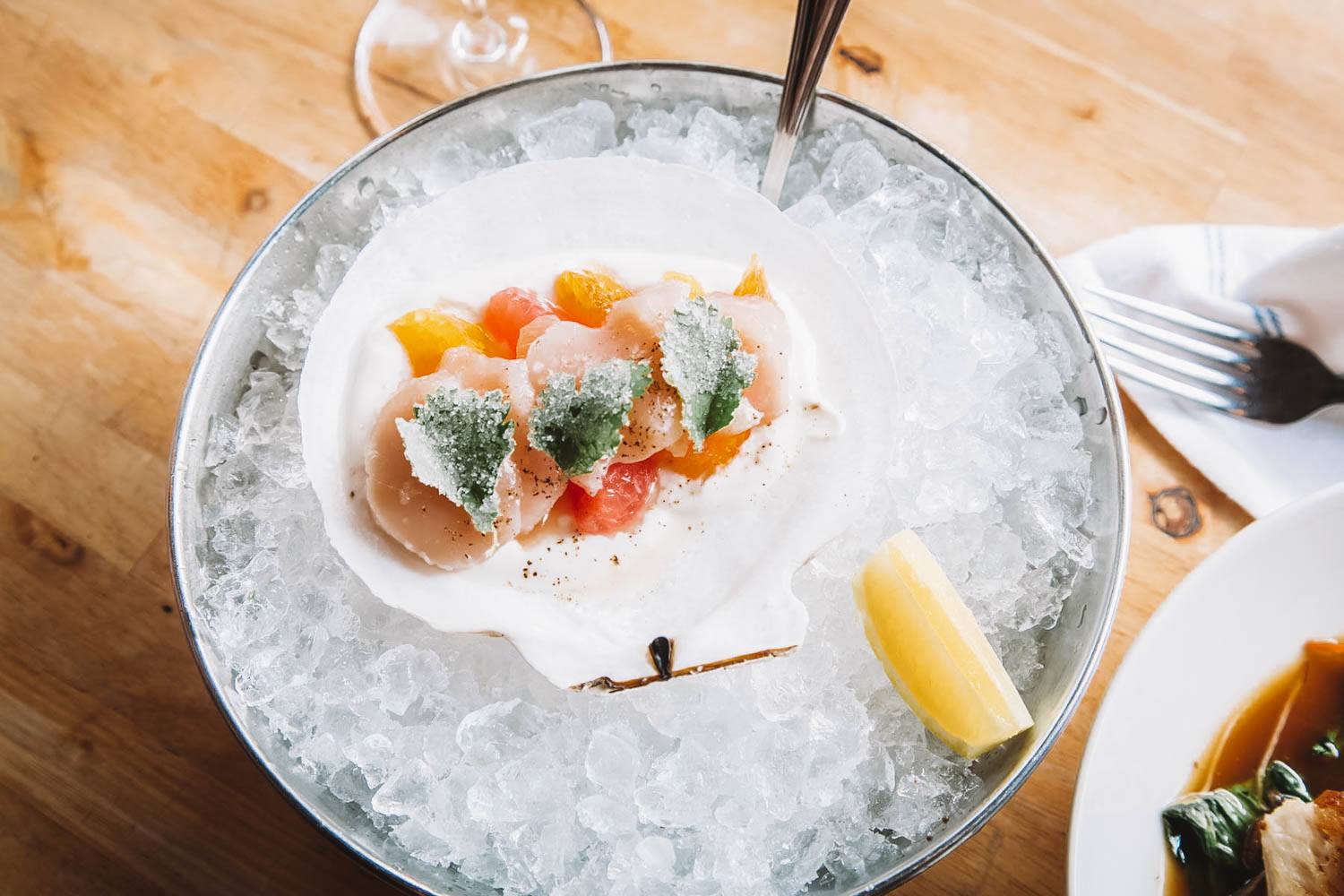
Every city needs a roster of robust, casual, easy to get into restaurants. New York has a bunch, and for me, my chosen go-to is Jeffrey’s Grocery.
The food is not going to change your life, but the food quality is consistent and will allow you to stay healthy. Try the seared squid and a tuna steak salad or veer off of your diet and add a side of the jalapeno and honey butter cornbread.
![]()
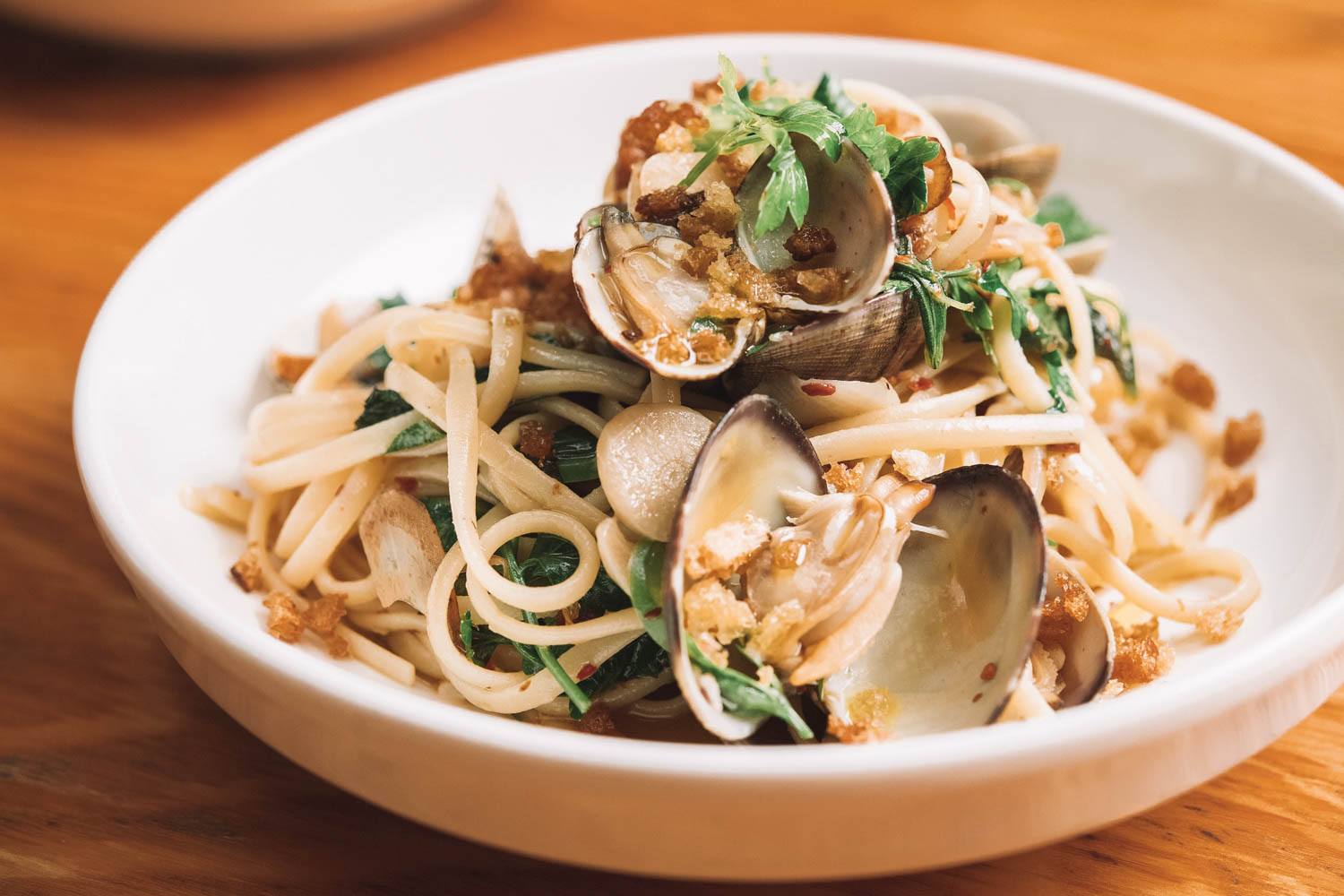
I went to the West Village’s L’Artusi with a large group of friends when my best friend from Australia was in town. I went here with my family for my 34th birthday. I took a coworker here for our holiday dinner.
L’Artusi is truly the perfect for all occasions spot, ready for you no matter what. My go-to order is always the crudo and the ricotta salata, chilis and fried egg on top of either asparagus or mushrooms.
Follow up with their spaghetti with olive oil, breadcrumbs, garlic, and chili.
![]()
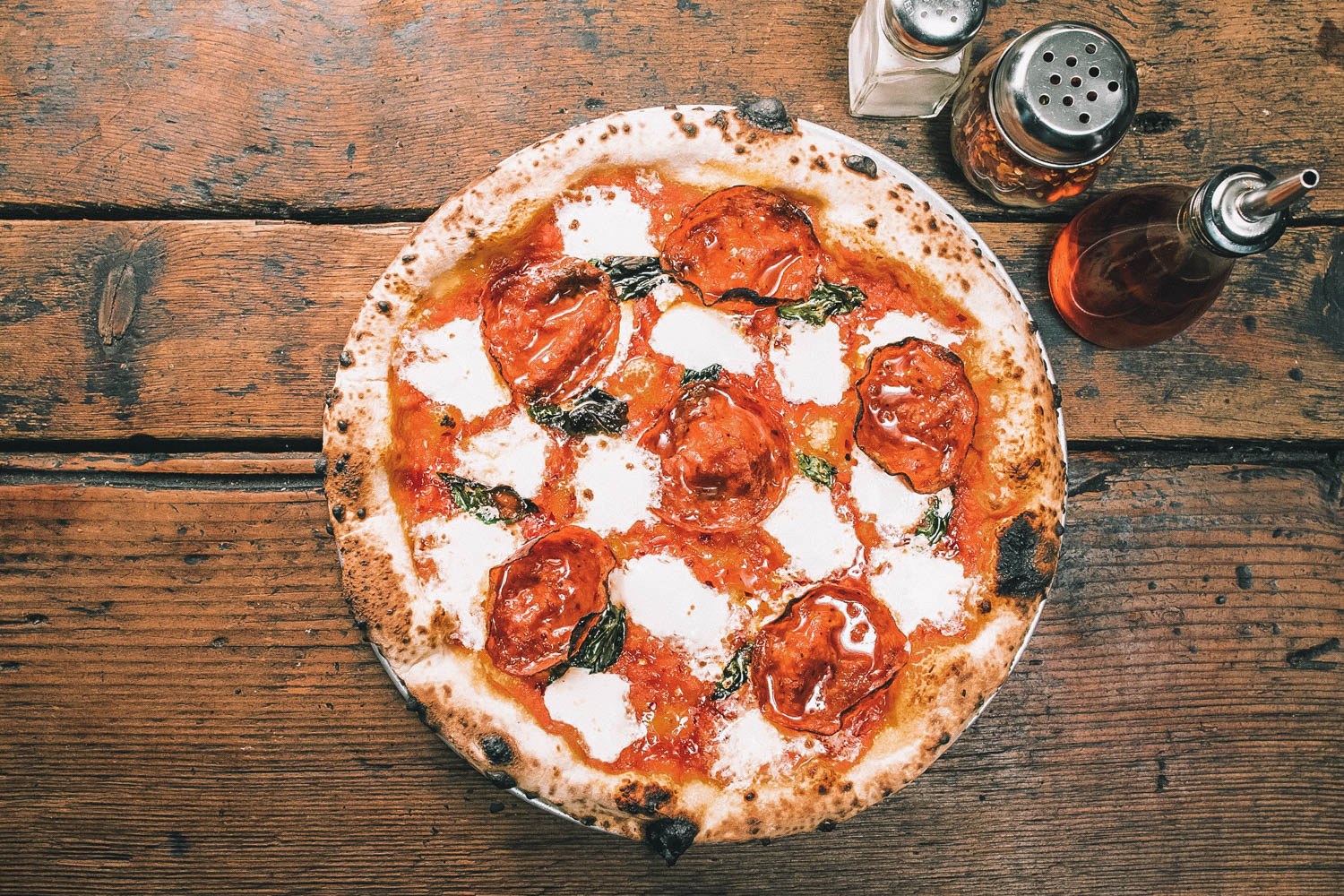
Roberta’s used to be the hottest place in town (or in Brooklyn). But while the hype has settled down, it does continue to serve up some of the best food in NYC.
The layout is spacious and fun and has a ton of energy to it. In the summer you can laze around at the picnic tables out back with drinks, and in the winter they convert the same space into what feels like a ski chalet.
The stracciatella with grilled bread is the perfect starter, followed by the roasted sweet potato with buttermilk and Calabrian chili. Their pizzas, Beastmaster and Lil’ Stinker, are doughy and delicious.
![]()
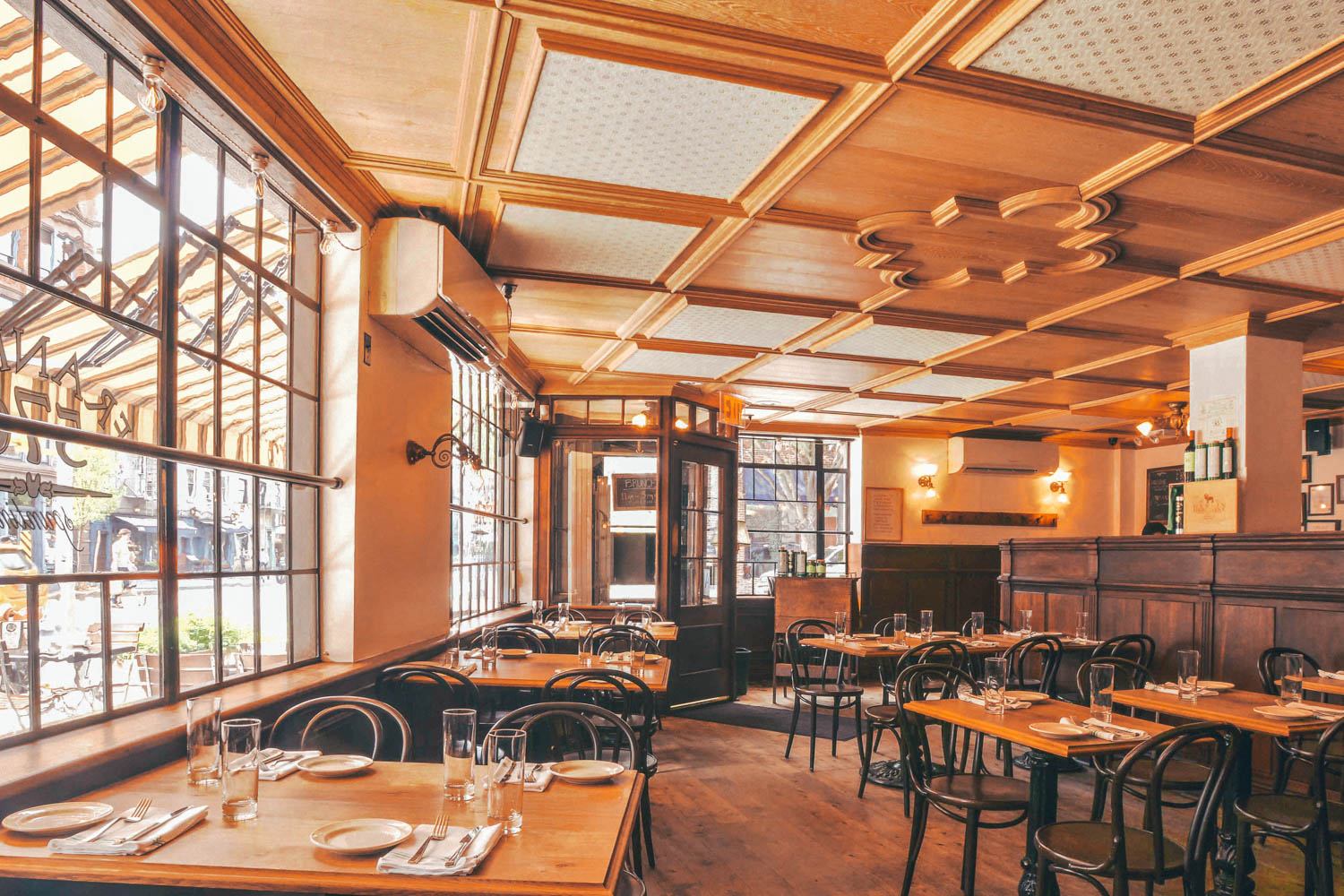
Frankies 457, in Carroll Gardens, Brooklyn, is the definition of a charming neighborhood joint. It is also a place that you should travel to and experience even if you don’t live anywhere near it.
On the scene since 2004, it was the first of its kind way back then. Now, the owners, better known as “The Franks” are known all over the world, often collaborating with different chefs or just doing what they do best right here in NYC.
The menu at Frankie’s is sizable. There are several different crostini options, meatballs, simple salads, and a homemade cavatelli with sausage and brown sage butter that is the star of every meal.
![]()
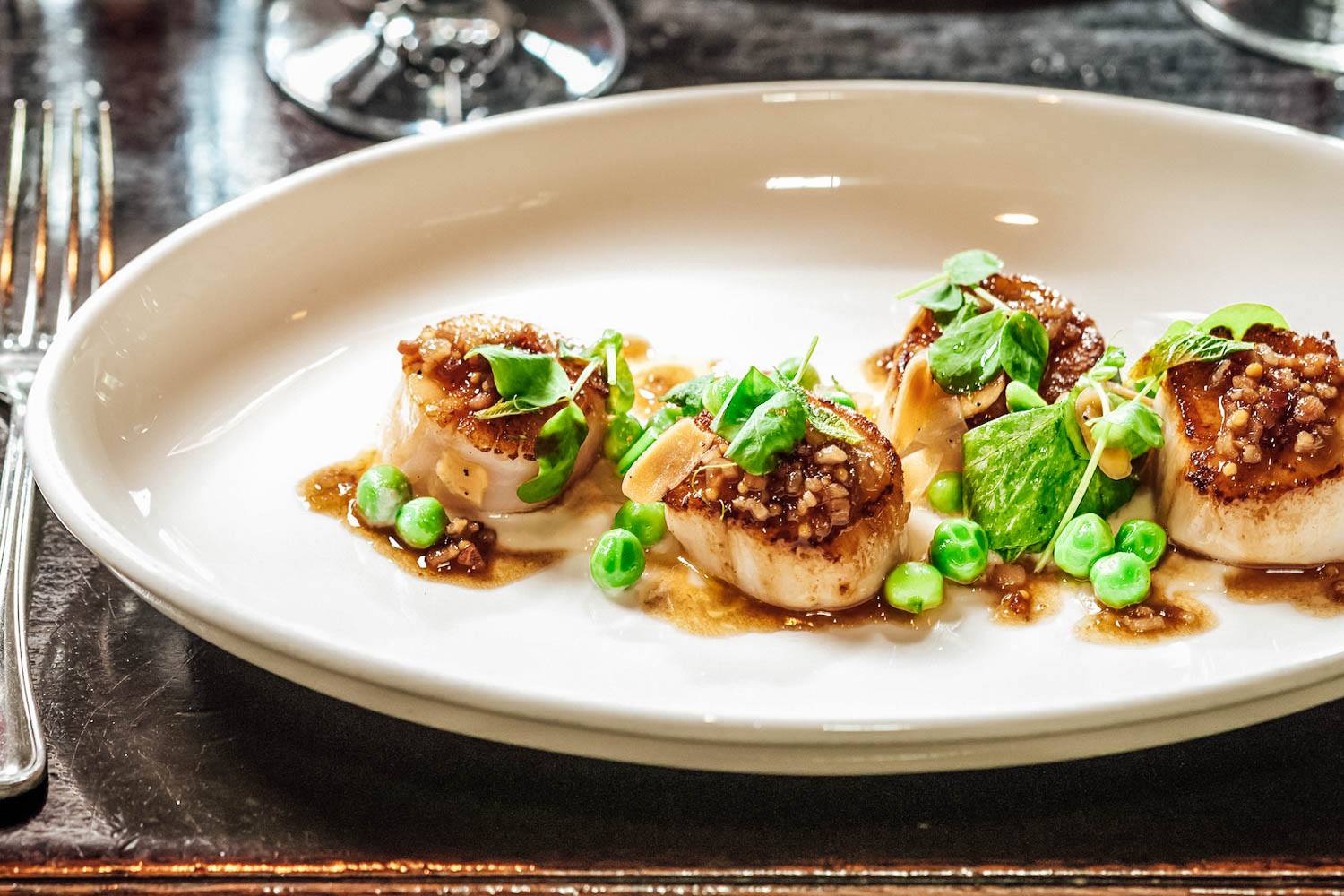
Locanda Verde is one of those New York City establishments that somehow looks exactly like it sounds. Spacious, dark furnishings, high ceilings, and stocked with a prominently displayed liquor shelf.
It’s a solid looking restaurant located in the heart of Tribeca.
The whipped ricotta appetizer is pretty much one of the best things you’ll ever eat, and the homemade pasta is among the best in NYC. Locanda is also good for any occasion – dinner with parents, dinner with friends, brunches, or client lunches. It never fails.
![]()
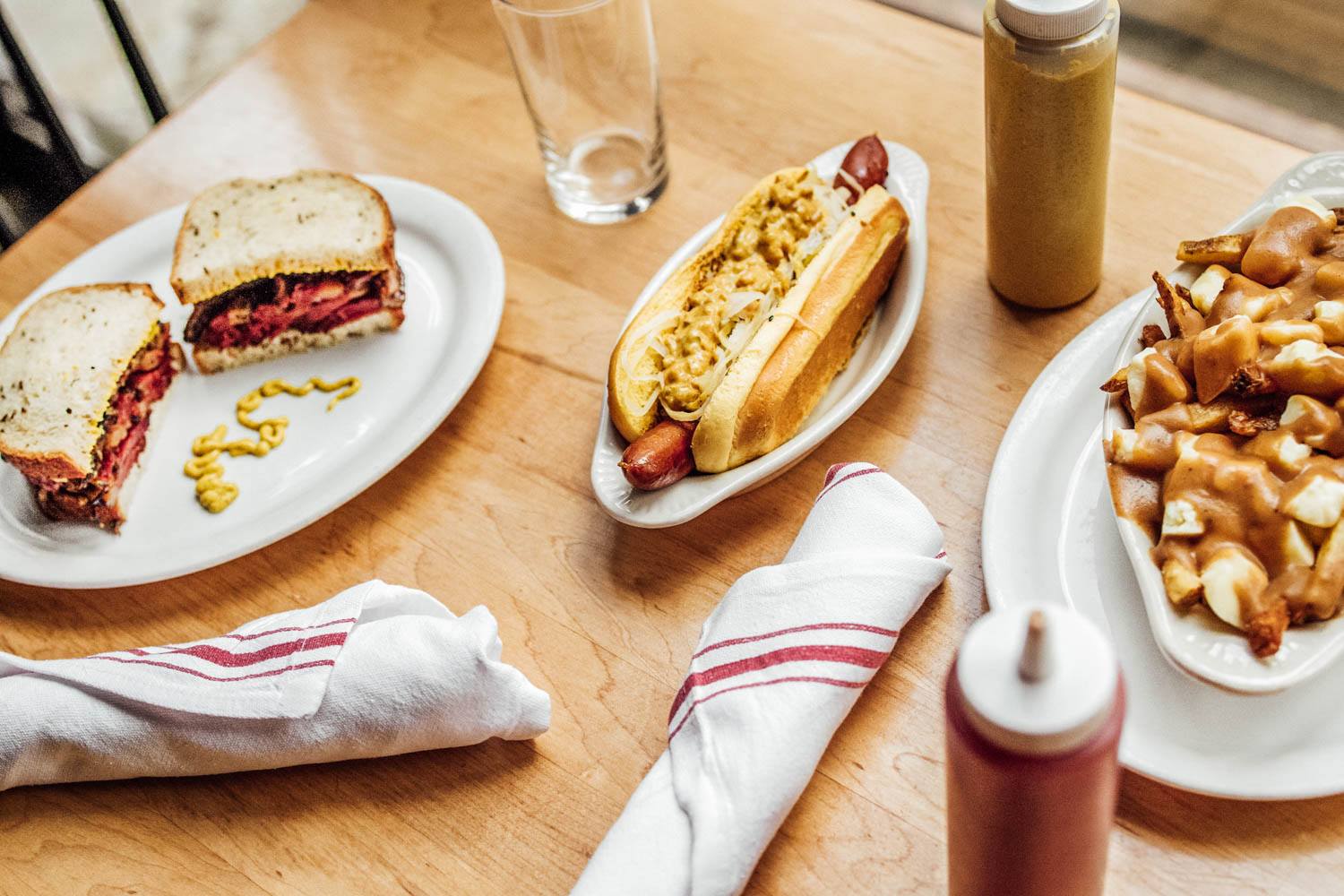
The Brooklyn outpost of Mile End is a favorite local hotspot. I love stopping by their six-person counter midday on a Saturday, watching the chefs flip eggs and hash browns on the grill, and catching up with a good book or the latest edition of Travel and Leisure.
A team that stems from Montreal runs the small space, and their Canadian bagels deserve a spot on any best food in NYC list.
![]()
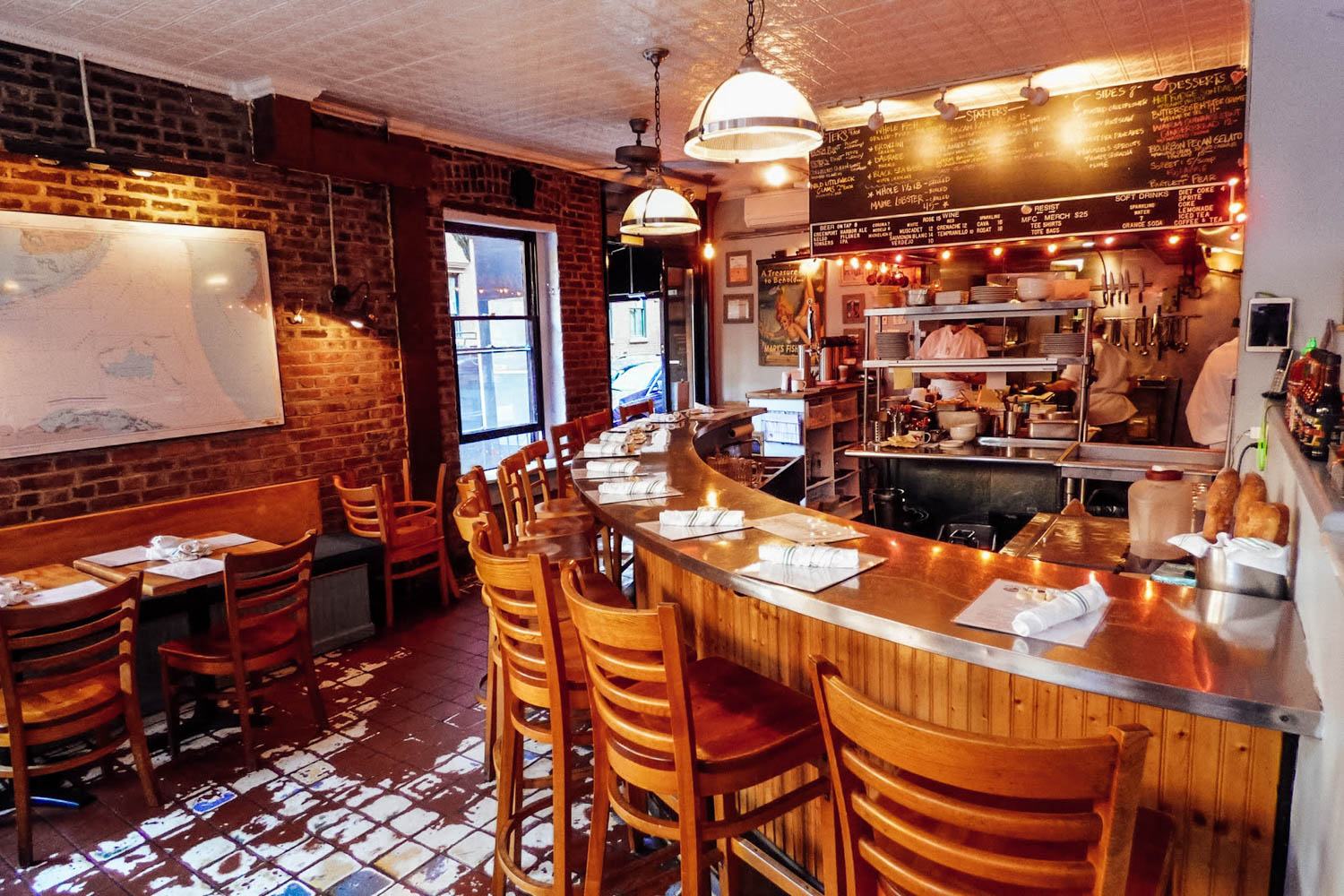
Located in one of the most beautiful corners of New York City, I will always have a special place in my heart for Mary’s Fish Camp. Beachy, nautical, and casual, it stands out in a city that has a lot to offer.
Though their dishes like the fish tacos and the tuna burger are well done and worth trying, the lobster roll is hard to stay away from. It ’s full of mayonnaise, chunky, and worth every penny.
![]()
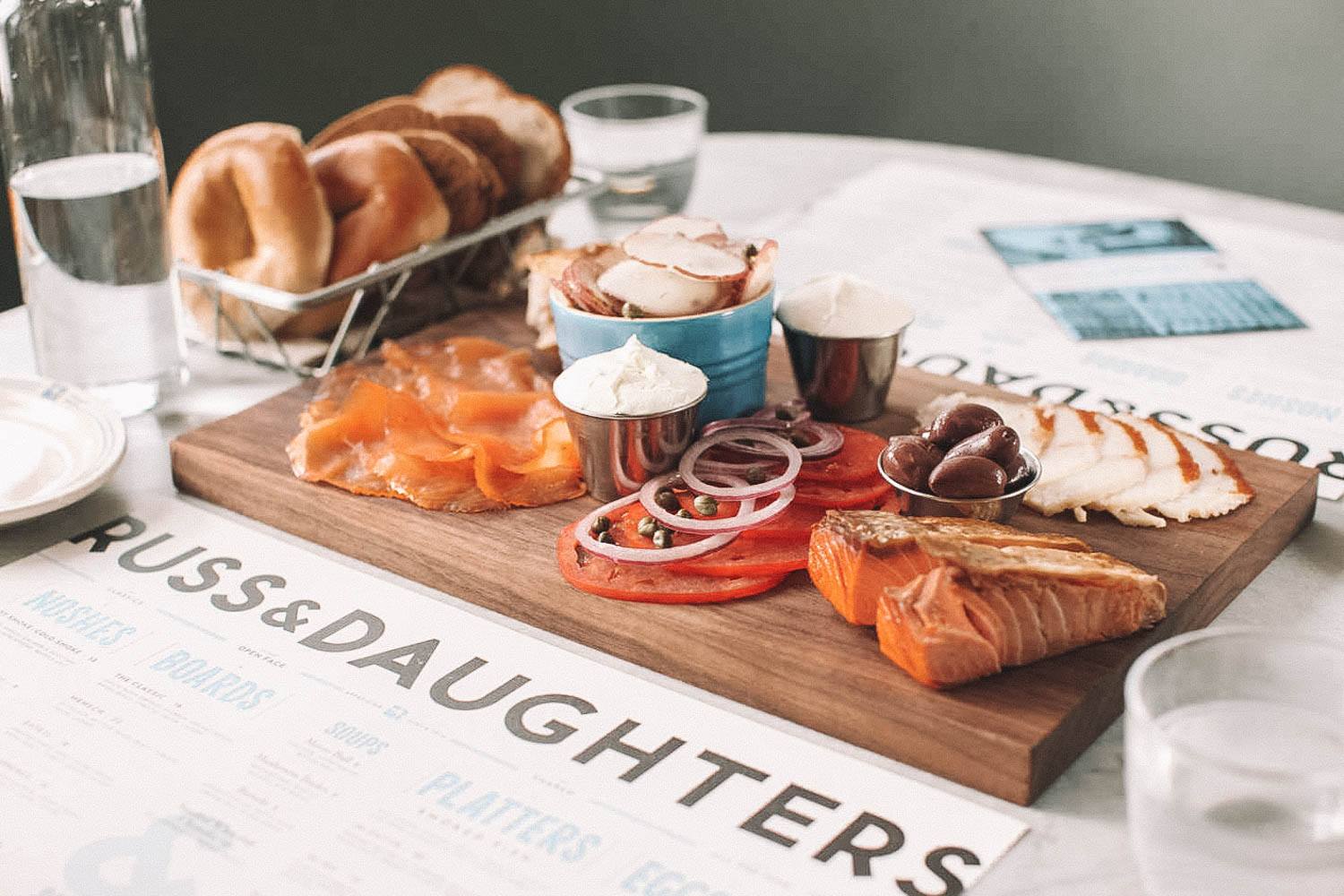
Russ and Daughters Cafe on Orchard Street in the Lower East Side is the perfect example of New York City institution. With smoked fish at the forefront, the cafe works well for any occasion.
Whether you’re on a solo breakfast mission or looking for a great dinner spot to take your friends or family.
![]()
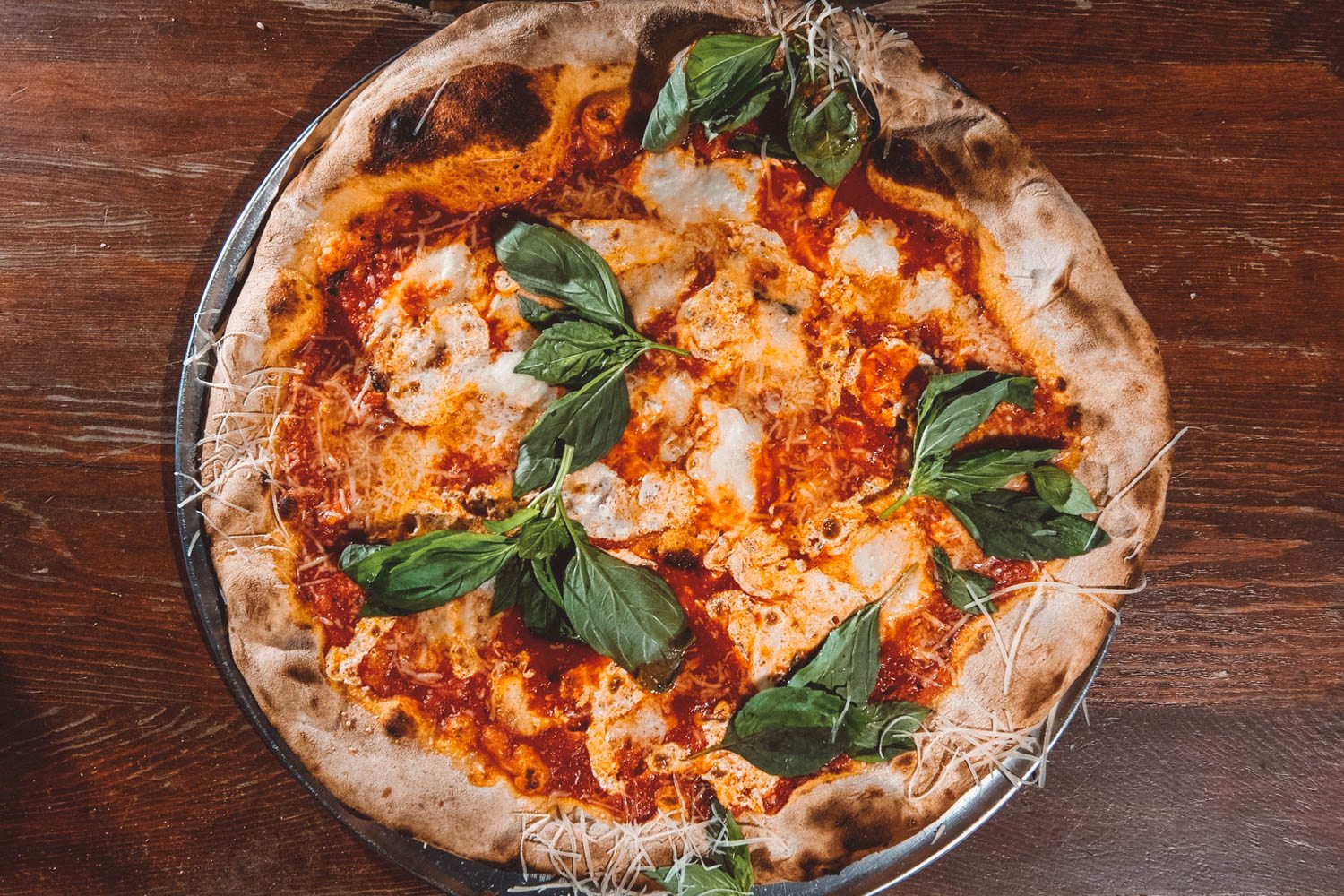
There is a lot of good pizza in New York City. There are tons of top five lists everywhere, all written with their own emphatic arguments.
Lucali is my personal favorite. There is no menu here- you get either a plain pizza with a choice of toppings like garlic, basil or grilled eggplant, or a calzone.
Nothing else is offered, and nothing else is needed.
![]()
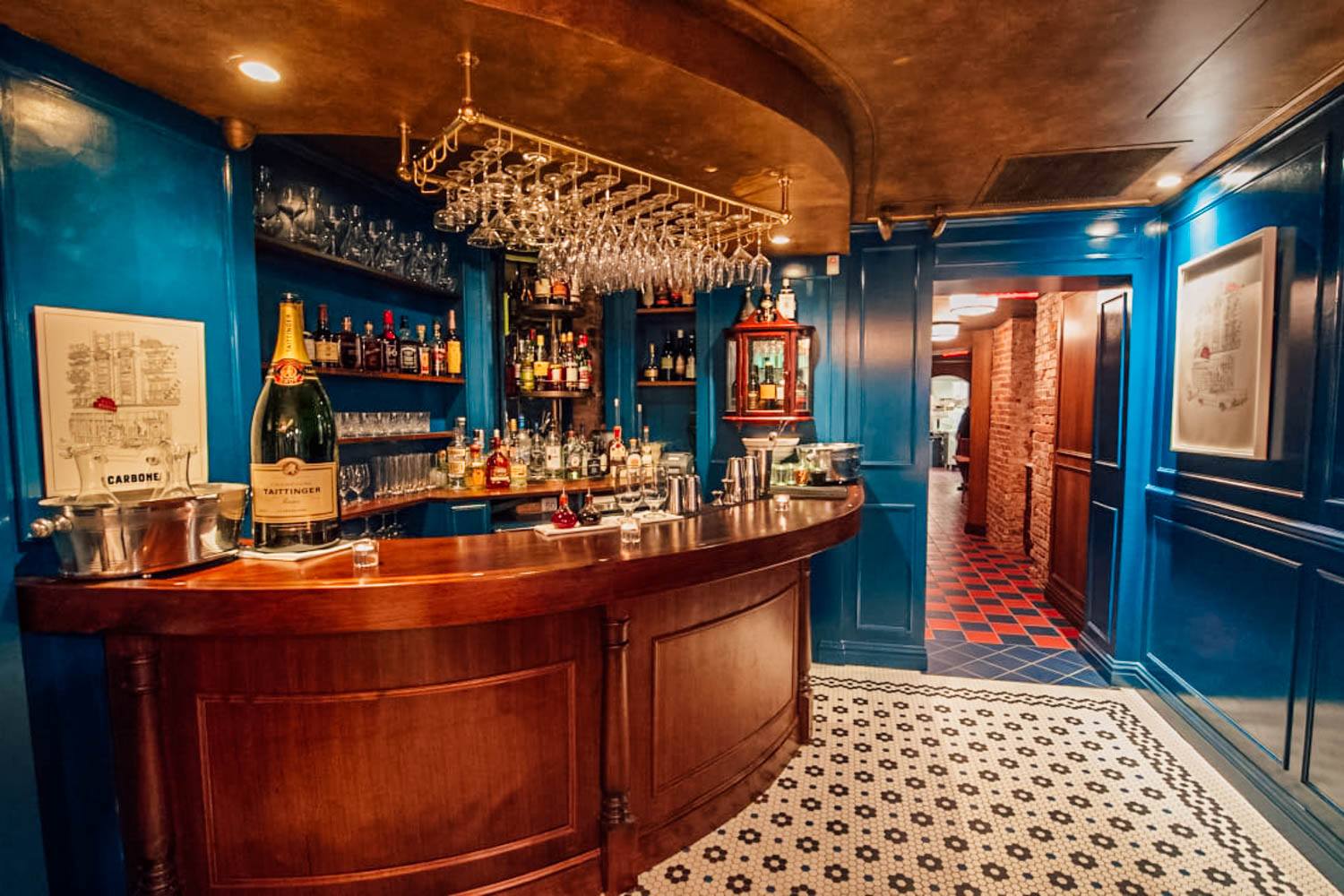
Carbone will make you feel like you’ve traveled back in time, and simultaneously stuff you to the point of no return. The third establishment from the Carbone/Torrisi powerhouse is epic.
Going here pretty much guarantees high energy and a good time. Coupled with the outstanding food and Carbone is easily one of the best restaurants in New York City.
The meatballs, veal for two, spicy vodka rigatoni and caesar salad are the stars on the menu. The mozzarella and prosciutto, the sea bass and the carrot cake are stand out as well.
Go here hungry and with a pair of forgiving pants.
![]()
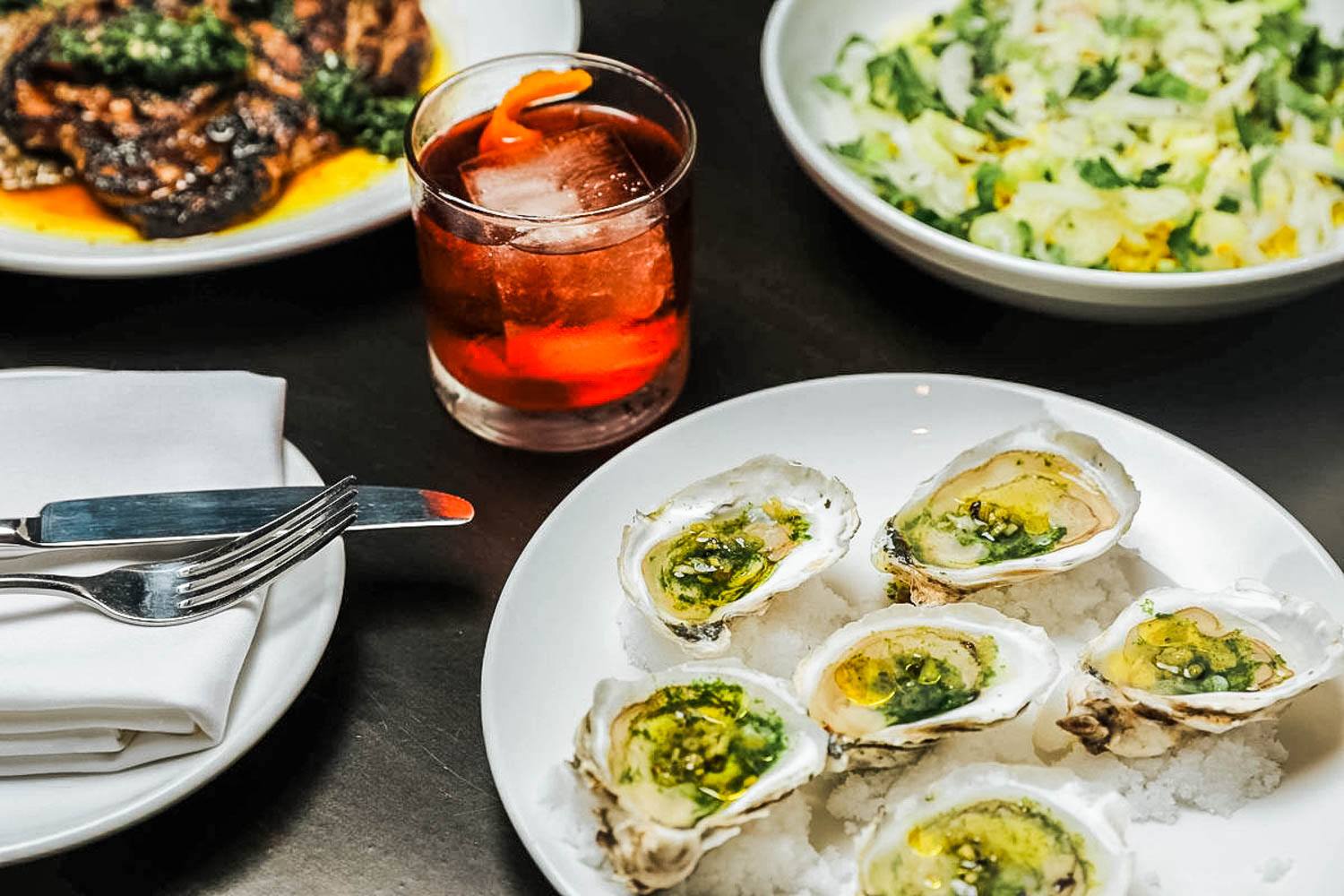
Chez Ma Tante is the perfect combination of a comfortable neighborhood gem meets high-quality cooking. The dinner menu takes on the vibe of a gastropub, offering dishes ranging from steak tartare with potato chips to kohlrabi and apple salad.
The brunch menu feels a little more like a European combo platter with items like tortilla Espanola and quiche with English cheddar. Honing both indoor and outdoor patio seating, Chez Ma Tante is excellent any time of the year.
![]()
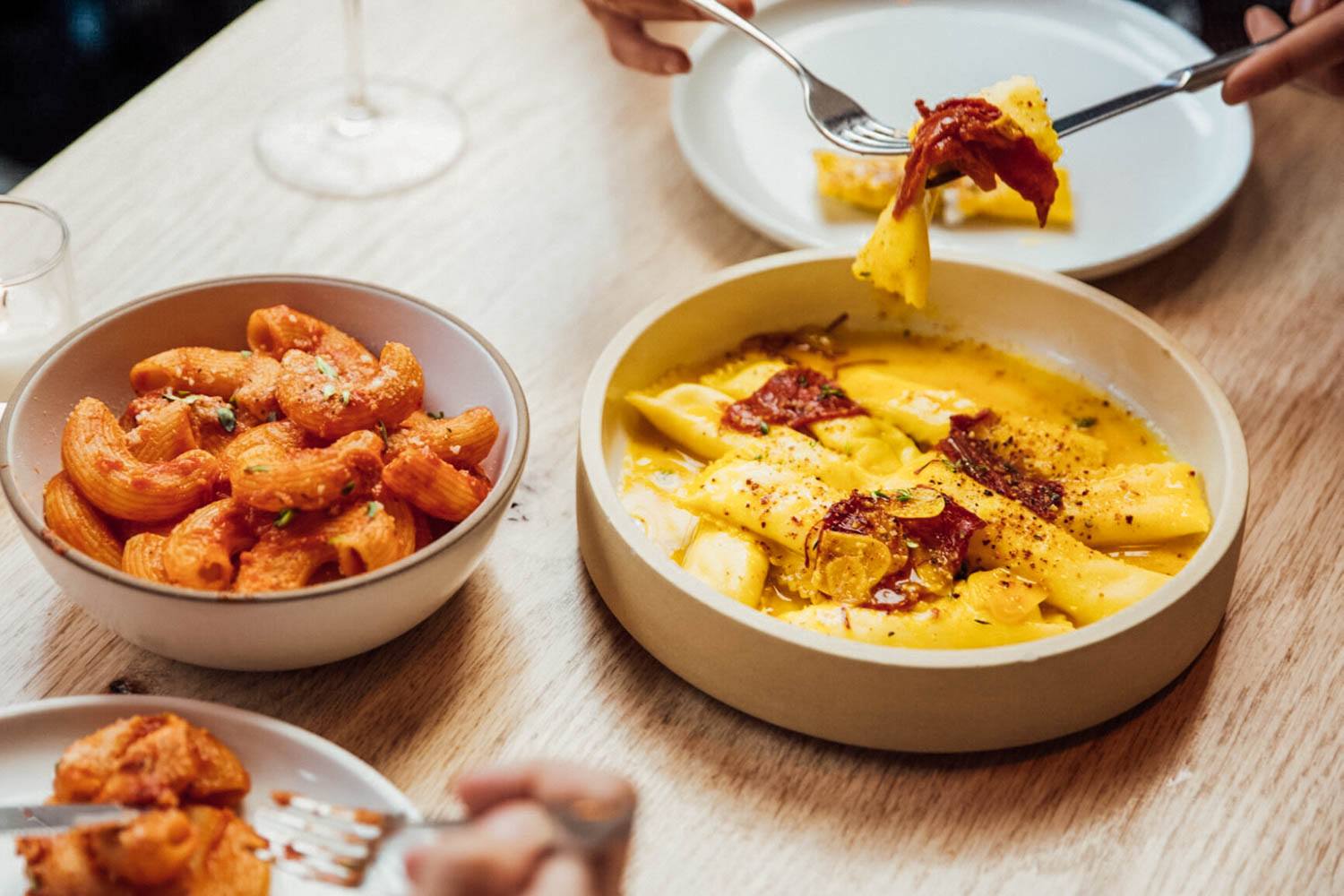
Out of all the restaurants in New York City, Misi made the biggest impression on me in 2018. The unofficial tagline here is “keep it simple” which is what it does – to an extent.
The concept of simplicity comes through in the structure of the menu. It consists of ten vegetables and ten kinds of pasta.
What was not simple was the caliber of food. Every single thing I tasted quite ‘simply’ blew my mind.
The charred marinated peppers, marjoram, whipped ricotta crostini was jaw-dropping. The roasted eggplant with Calabrian chili, lemon, and olive oil will satisfy any foodies palette.
![]()
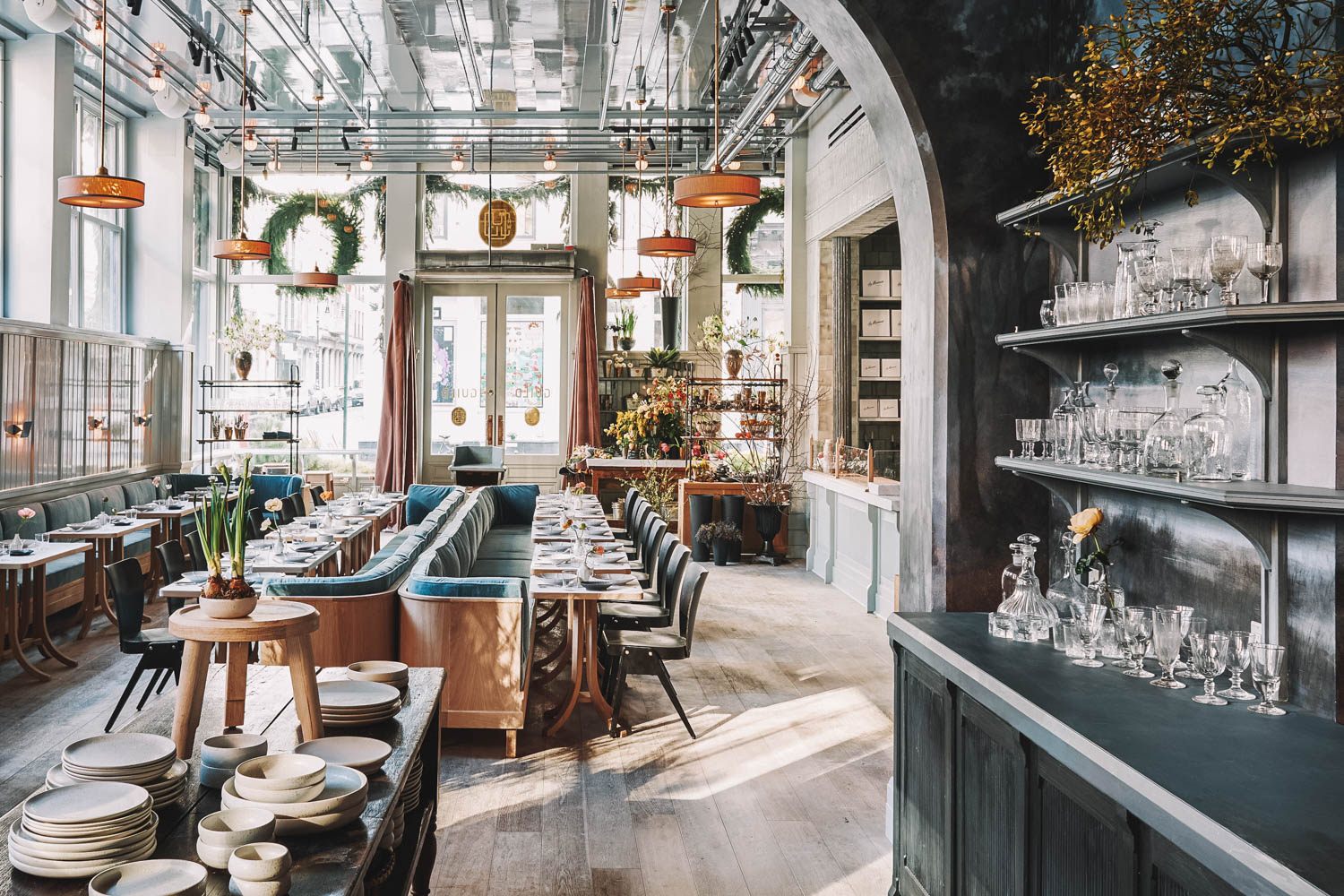
I found La Mercerie Cafe to be incredibly impressive. The caliber of food to be quite so outstanding for a half high-end home store half French cafe.
The gigantic buckwheat crepes stuffed with aged Comte cheese and the sunny side up egg was my personal favorite on the menu.
![]()
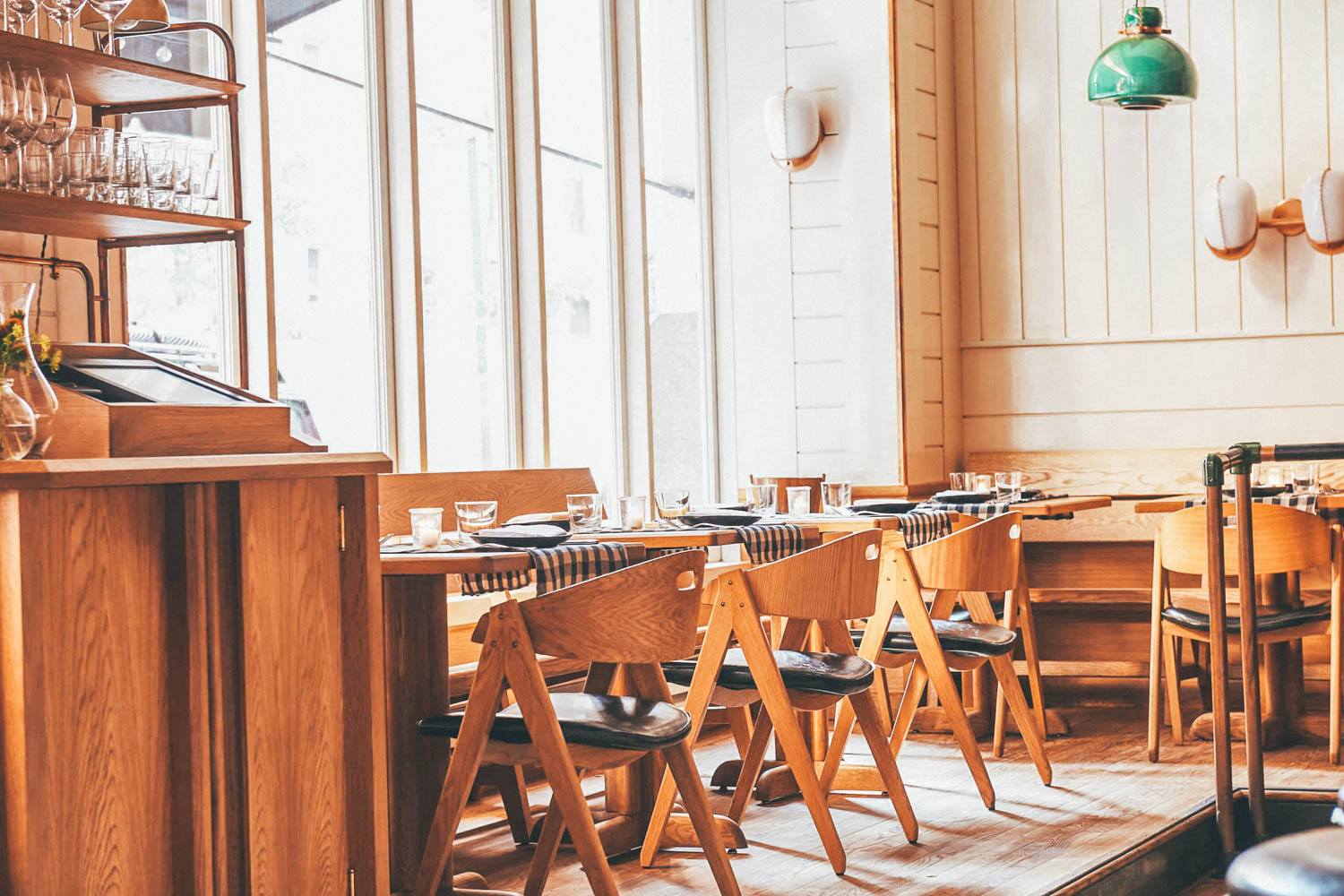
There aren’t many Manhattan-based restaurants that can compete with Upland. It boasts towering ceilings, sweeping brightly colored spaces and food that shines brilliantly and consistently.
Coming onto the scene in 2014, Upland’s popularity has yet to die down. You can’t go wrong with their to die for cacio y pepe.
![]()
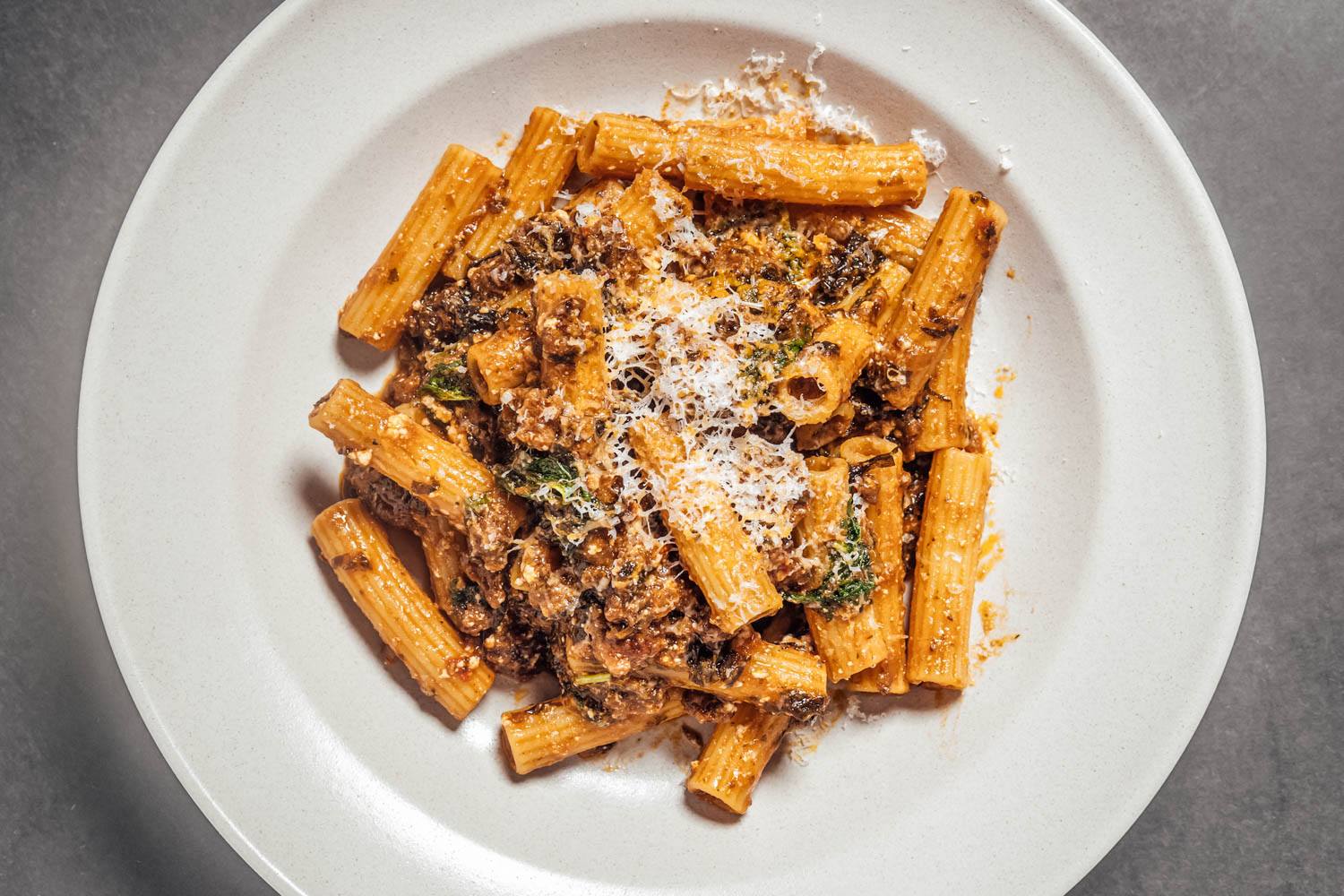
Pasquale Jones is located in one of the best corners of Manhattan. Smack in the center of charming Nolita, the second restaurant from the team behind Charlie Bird has a central focus on its wine and wood burning stove.
The clam pie is a steady crowd favorite. My personal favorites are the warm braised leeks with toasted walnut, the Parmigiano Reggiano, and pumpkin cappellacci pasta with chestnut, sage and brown butter.
![]()
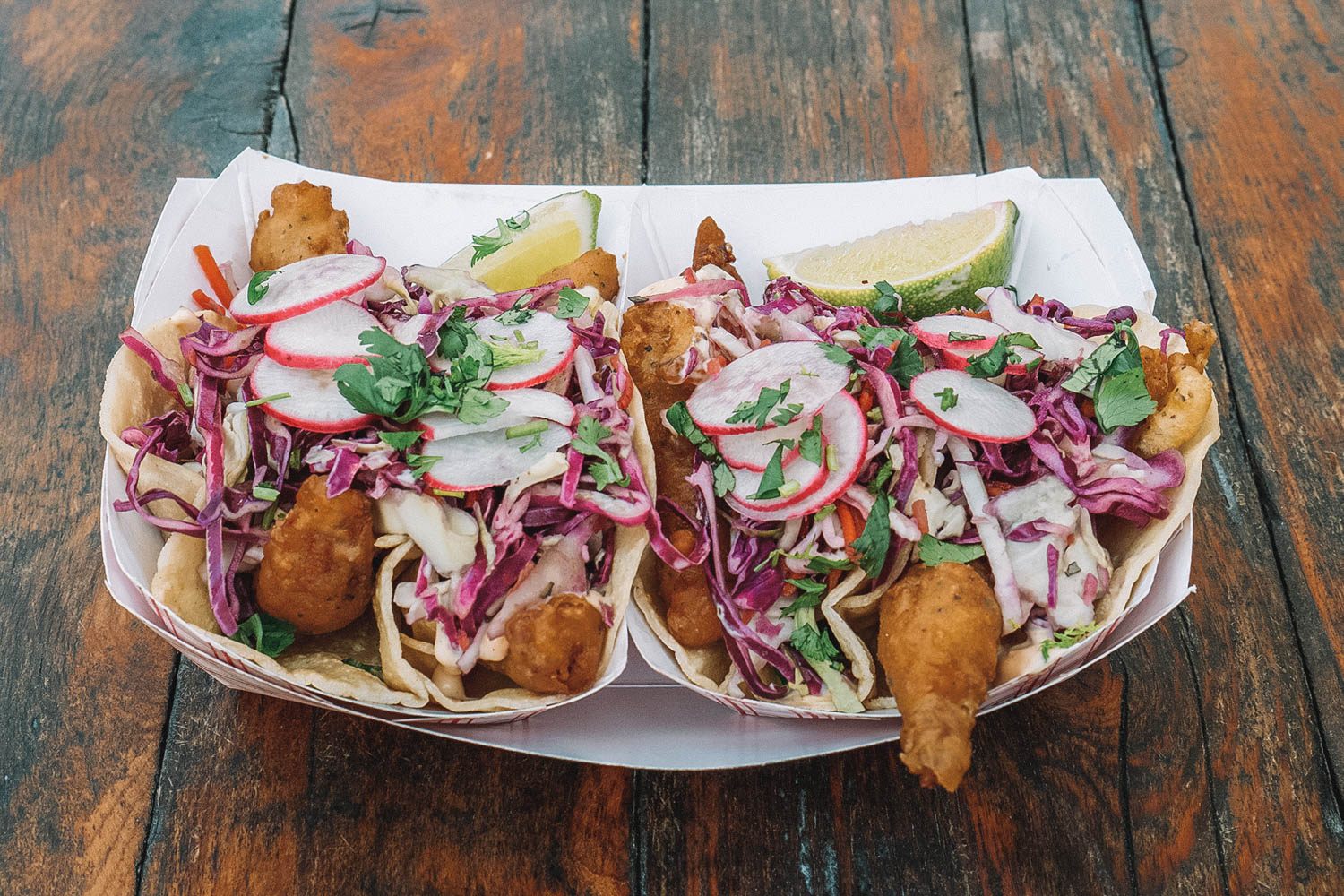
Rockaway Taco is a large beach bar that is home to the single best fish taco in New York City. I know that’s a bold statement, but I stand by it.
Everything that I love about a taco exists here on the outskirts of Queens. You’ll get jumbo portions of the fish, topped with the perfect mix of cabbage, radishes, spicy aioli sauce and guacamole.
![]()
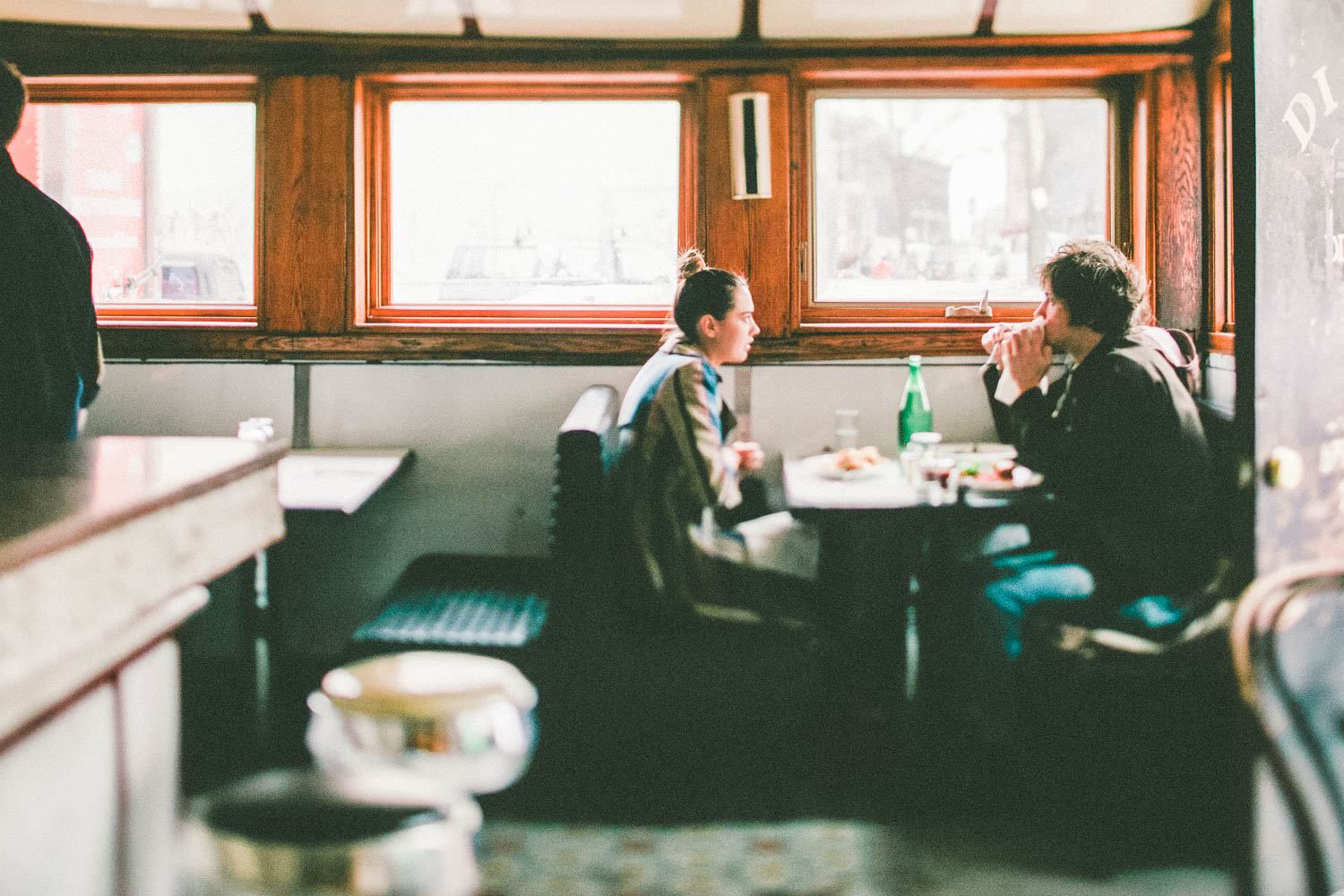
I have no idea why it took me so long to make it to Diner. It’s a light-hearted place that serves up some excellent food with an atmosphere of a diner.
Menus are scribbled out once you sit down — the waitstaff taking a seat beside you to handwrite the day’s options on the paper that covers your table. The menu is always changing but usually consists of two to three starters, their famous burger, and the fish of the day.
![]()
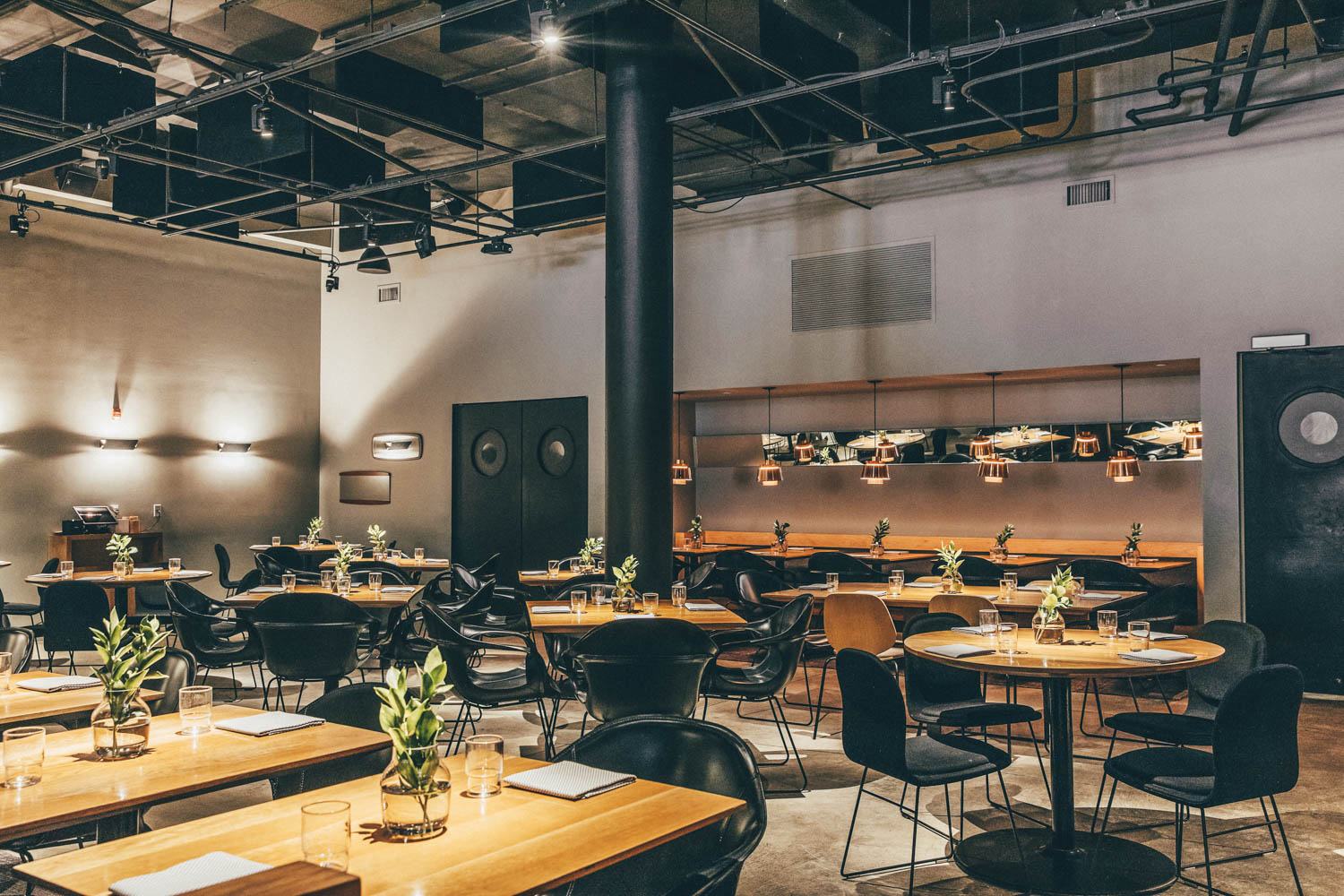
Rule #1, come here with a crew. Rule #2, ideally have a corporate card or two with you. Rule #3, order a ton of food.
Getting to taste a fair share of the menu at the sleek yet buzzing Cosme is part of the fun. It’s the best way to get the most out of a dining experience here.
Launched by the same owners of Pujol in Mexico City, Cosme combines its vibrant Mexican roots with localized Upstate New York touches and ingredients. Though very different than Pujol, Cosme has made its mark in the food world.
It landed spot number 25 on The World’s 50 Best Restaurants 2018 list.
![]()

There are now several different versions of the Emily restaurant group, owned by Emily Hyland and her husband, Matt. There are two in Manhattan, in the East and West Village, and two in Brooklyn, in Williamsburg and Clinton Hill, which is the original.
All outposts come with variations of Detroit style square pizzas and then the more traditional, but very noteworthy, round pies.
![]()
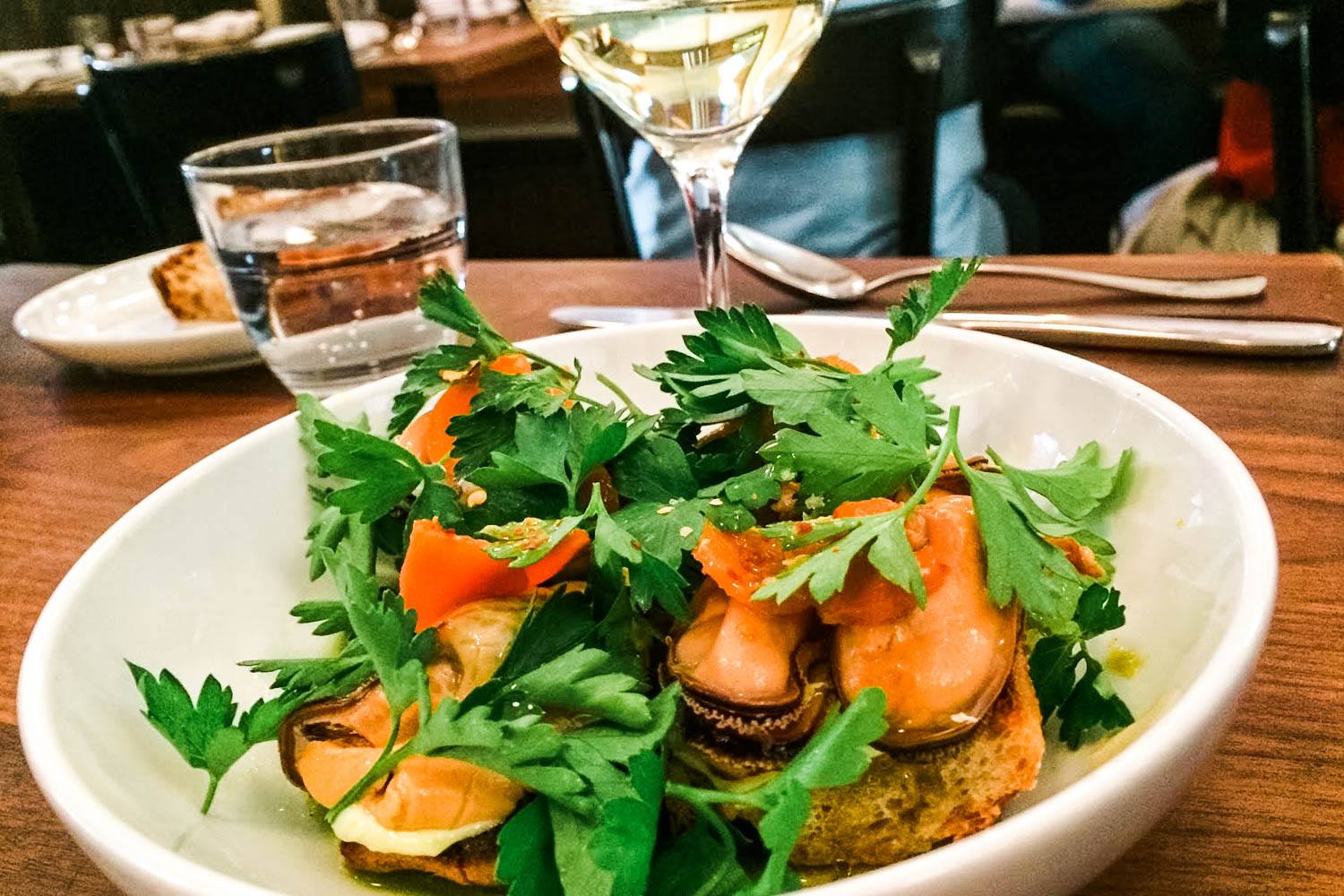
Every time I step foot in Estela, I get the feeling that something pretty special is happening there. It has an atmosphere that makes you feel like you’re on the verge of having a memorable evening.
The menu is meant to be shared, and they advise on choosing 5-7 dishes depending. Highlights are the raw scallops with peanut and chili, the burrata and salsa verde on charred bread, and the ricotta dumplings with mushrooms and pecorino sardo.
It’s not a cheap meal, so come here ready to splurge and eat well.
![]()
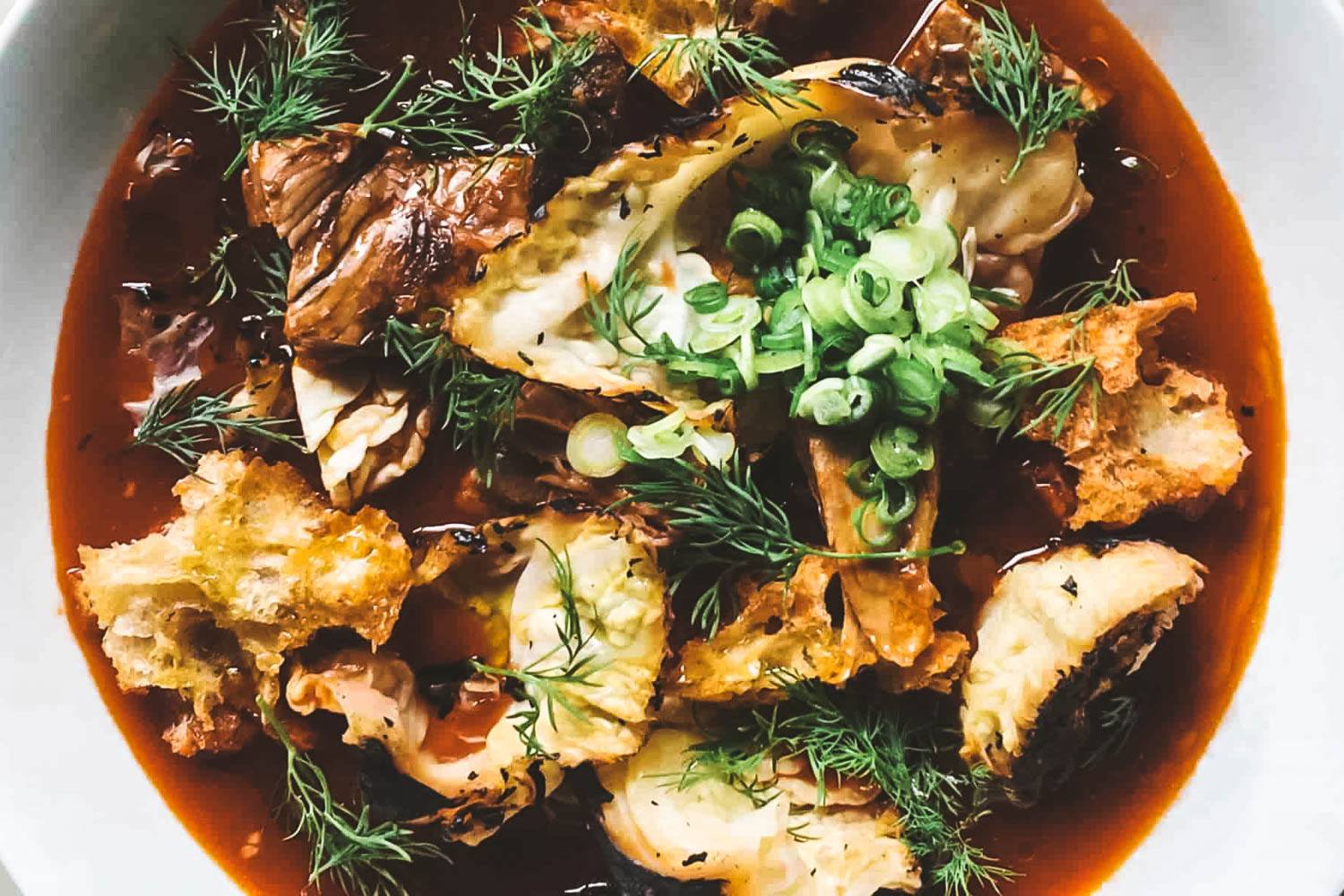
Marlow and Sons was one of the first restaurants in Williamsburg to make its mark on the dining scene. Fast forward 15 years later and its popularity in NYC is still going strong.
Plus, it hasn’t lost it’s down to earth feel and still delivers on a small, but well-executed menu.
![]()
Which restaurants do you think are serving up the best food in New York City? Let me in the comments below!
The post Where to Find the Best Food in NYC appeared first on The Blonde Abroad.